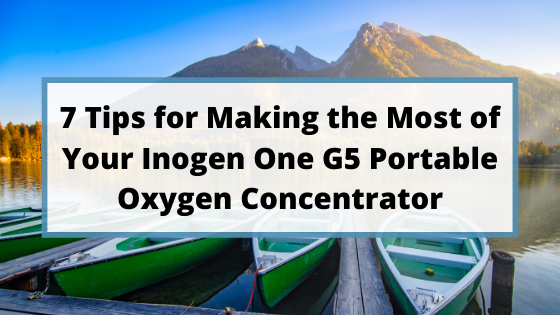
In this day and age, convenience and reliability are everything. With how busy the average American is in their day-to-day life, most of us expect things like our phones, vehicles, and medical equipment to work as they’re intended all the time. By doing so, we’re able to enjoy the freedom to go where we want and do the things we set out to do without anything standing in our way.
But if you have COPD, cystic fibrosis, or one of any number of respiratory illnesses, you know that there’s one additional obstacle standing between you and freedom — your oxygen needs. When your needs are met, you’re able to enjoy your life and accomplish everything you set out to do. However, if they aren’t met, you could be left with a lot of wasted time and effort.
.png)
Last year, oxygen patients were fortunate enough to be introduced to one of the most convenient and reliable portable oxygen concentrators ever produced — the Inogen One G5. This new unit provides the highest oxygen output of any pulse flow oxygen concentrator on the market meaning that more oxygen patients than ever before are able to experience true freedom.
But when you purchase an Inogen one G5, your freedom isn’t limited to staying out of the house longer. Inogen has built an oxygen machine that is capable of being fully customized to suit all your wants and needs. In this post, we’re going to take a look at seven different things you can do to make the most of your Inogen One G5. If you have any questions about the G5, be sure to leave them in the comment section or fill out the form to the side of the screen so one of our oxygen specialists can reach out to you.
{{cta('fa8abc2a-1e88-4fa3-82fd-1cb5b9ed43b2')}}
Read and Understand the G5 User

Manual
If you want to make the most of your Inogen One G5 experience, you should start by reading and understanding the user manual. The G5 user manual describes in detail all of the specifications and functions of your new mobile oxygen device. It also provides important information about cleaning, maintaining, and troubleshooting your new unit.
You don’t need to read the entire manual from top to bottom, however, it’s recommended that you read the most important sections. This includes things such as operating instructions, user controls, and cleaning and maintenance. You should also begin to familiarize yourself with the audible and visible signals so that you’re prepared if something goes wrong while you’re out and about.
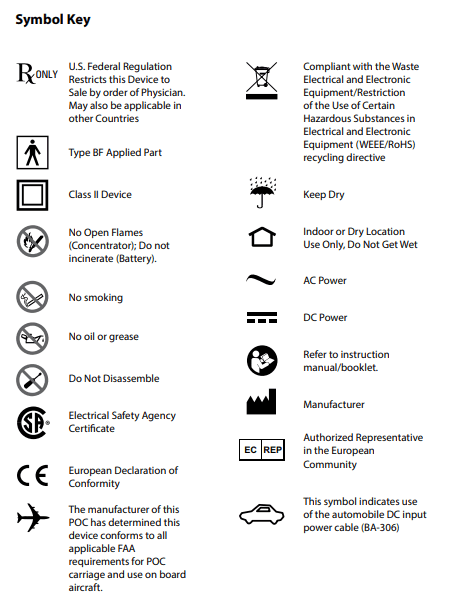
Every Inogen concentrator comes with a manual, so once you’ve read it, be sure to keep it in a place that it won’t get lost. The carrying case that comes with the G5 has a side pouch where you can store it. This way you’ll be able to easily refer back to it whether you’re at home or on a trip. If you ever lose your G5 manual, there is a PDF version you can find online with a quick Google search.
If you decide that you don’t want to carry the Inogen One G5 manual with you, you can always download the Inogen Connect application on your mobile phone or tablet. With this application, you’ll be able to quickly read up on troubleshooting information or check the glossary of symbols for a symbol you don’t recognize.
Discover Which Carrying Option Suits You
The way you carry your Inogen One G5 is almost as important as the weight and size of the unit itself. While you can simply use the carrying case that comes with your G5, you’d be selling yourself short if you didn’t try some of the other carrying options that are available to you.
The G5 Custom Carrying Case is one of the most popular G5 carrying bags on the market. This is similar to the carrying case that comes with the G5 but it offers a more sleek and minimalist design. The G5 Custom Carrying Case has a shoulder strap that can be adjusted to suit your needs and it a pad to help prevent irritation on your shoulders. Once the device is placed snuggly in the bag, the flap can easily be moved in order to access your G5’s control panel.
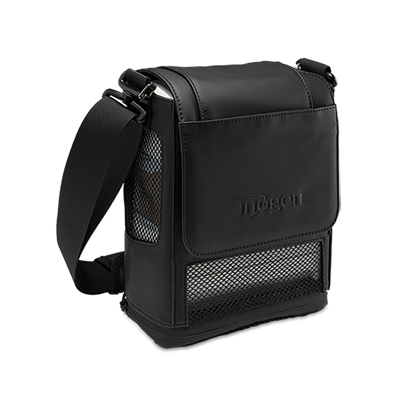
The custom carrying case is perfect for anyone who wants to take a quick trip to the grocery store or if you want to travel as light as possible. You’ll be happy to know that there is some storage space on this carrying case, but it’s primarily designed for small personal belongings like your car keys, a wallet, or your Inogen One G5 user manual. The sides are made of a mesh-like material that leaves G5 intake vents open and prevents overheating.
Another carrying option available for the G5 is the Inogen One G5 Backpack. This G5 accessory is designed with the traveler in mind because it has ample storage space to keep all your G5 accessories along with many other belongings such as your passport, wallet, keys, and much more. Like with the custom carrying case, the G5 will fit securely into the back pouch and won’t slide around while you’re walking. The control panel is fully visible and accessible without removing the device.
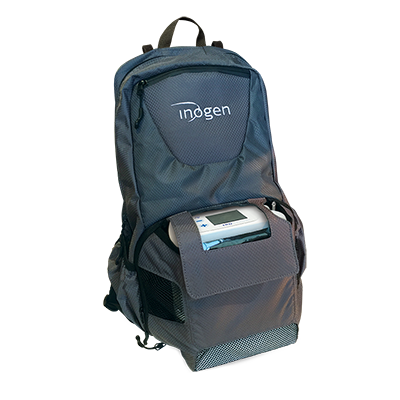
Last but certainly not least, we have the GO2 Carryalls. The G5 Carryalls have yet to be released, but the G3 Carryalls will give you some idea of what to expect when they do come out. Unlike other Inogen carrying bags on the market, the Carryalls are designed to be stylish. In fact, most people think they’re purses until they look closely and see that it’s holding a portable oxygen concentrator. Once you place your concentrator in this bag, it will be fully concealed with the exception of the nasal cannula which runs out the side.
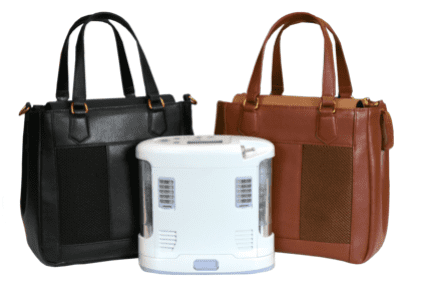
Like a purse, the GO2 Carryalls have plenty of room for small personal belongings and the control panel can be accessed by simply unzipping the bag. Currently, the G3 offers two different Carryall colors: a classy brown and a sleek black. Either way you go, this carrying bag is sure to grab the attention of one or more passersby as you’re out and about. If you’re interested in these bags, be sure to wait for the release of the G5 Carryalls.
Carry Extra Batteries
The Inogen One G5 already offers an impressive 13 hours of battery life on a flow setting of 1 using the 16-cell battery. This is more than enough battery life to stay out all day. This puts the G5 at the second-highest battery life for a POC behind the CAIRE FreeStyle Comfort. This is pretty impressive! But it’s worth noting that if you’re using higher settings or you’re traveling a lot, you may want to invest in a second battery.
One great thing about the Inogen One G5 batteries is that the 16-cell only weighs 1 pound more than the 8-cell. So, you’re effectively doubling your battery life for only 1 additional pound. You may even be able to upgrade the single battery that comes with the G5 if you decide you don’t want the single battery.
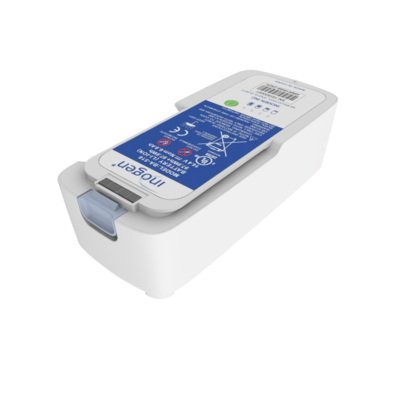
If you travel by plane frequently, it may be worth it for you to either upgrade to the double battery or purchase an additional one. Most airlines require you to have 1.5 times the duration of the flight in battery life. On the highest flow setting, the G5 double battery will provide you with about 3 hours of battery life, so this should be enough to cover you for most flights within the United States. If not, you can either reduce the flow setting or purchase an additional battery.
Make Use of Different Charging Options
One thing that many oxygen patients forget about the Inogen One G5 is that it has many different charging options to suit your needs. The AC charging cable is the basic wall charger that comes with your portable oxygen concentrator. The DC charging cable, on the other hand, is the one you’ll use to charge your POC in the car via any cigarette lighter. It’s a good idea to keep these both on you wherever you go.
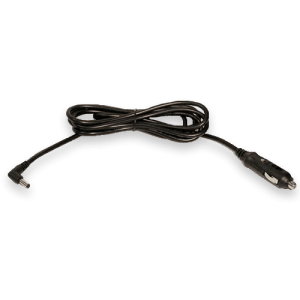
Many oxygen patients are shocked that they’re able to charge their oxygen concentrator while sitting at home or sitting in the car and while they’re simultaneously using it. If you’re taking a road trip, you’ll be able to keep your POC at a maximum charge so when it comes time to take a pit stop or do some sightseeing, you won’t have to worry about running out of battery. The only thing we would advise against is charging your portable oxygen concentrator while the car is off. This will drain the car battery quickly and after a while, you may find that your car won’t start.

The last charging option available for the Inogen One G5 is the external battery charger. This is a small device that attaches to either your 8-cell or 16-cell batteries and can charge them allowing you to charge them without them being attached to the G5 unit itself. What this means is that if you own two batteries, you’ll be able to charge them both at once: one on the G5 and one on the external charger.
Sell Your Old Home Oxygen Concentrator
Possibly one of the greatest things about owning an Inogen One G5 is that you’ll no longer have a need for your home oxygen concentrator. The G5 has something called Sleep Mode Technology built into it which closely monitors your breathing rate as you sleep. This system will make subtle adjustments to your oxygen delivery to ensure you’re always receiving the right amount of oxygen.

Oftentimes, oxygen manufacturers or oxygen concentrator suppliers will allow you to sell back an oxygen concentrator as long as it’s in good condition. So, if you have a home oxygen concentrator lying around the house, be sure to reach out to an oxygen retailer. With the extra money, you can invest in accessories for your Inogen One G5 or save it.
Another thing you can get rid of now that you have your Inogen G5 are those bulky and dangerous oxygen tanks or oxygen cylinders you have lying around. If you’re currently renting oxygen tanks, you’re going to want to return them to the owner so that you’re not paying to use them monthly. Even if you own your own oxygen tanks, you’ll want to get rid of them because they’re a fire hazard and they take up a lot of space.
-min.png)
In many ways, the Inogen One G5 is an all-purpose oxygen concentrator. It offers a lightweight design like portable oxygen concentrators but it has a high oxygen output like home oxygen concentrators. So, regardless of whether you’re someone who travels non-stop or you never leave the house, you’ll benefit greatly from having an Inogen One G5. Even people who consider themselves “homebodies” love having the ability to be more mobile and active in their own homes so they usually end up selling or returning their old home oxygen concentrators.
Use Your G5 With Your CPAP or BiPAP Machine
In addition to the Intelligent Nighttime Delivery Technology, the Inogen One G5 is CPAP and BiPAP compatible. In other words, if you have COPD and a sleeping disorder such as obstructive sleep apnea (OSA), you’ll be able to attach your G5 directly to your positive airway pressure machine and receive oxygen treatment simultaneously.
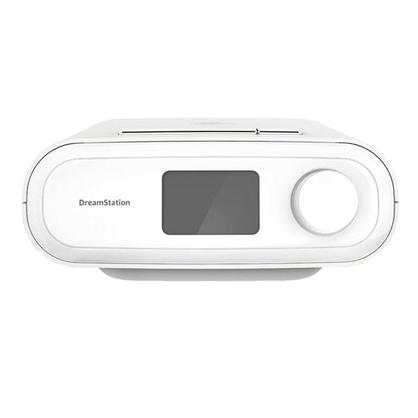
This is a very important feature to have with your portable oxygen concentrator because you shouldn’t have to sacrifice one respiratory treatment for another. Sleep apnea alone can be a very dangerous condition to cope with, and COPD can make it much worse. The compressor inside the Inogen One G5 is designed to be used 24/7, so you’ll never have to worry if it will hold up when you run it day and night.
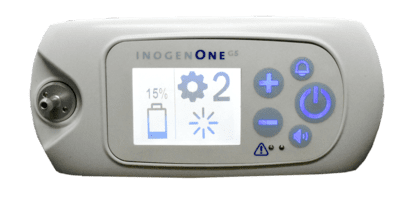
Before you use your G5 with your CPAP or BiPAP machine, you should first speak with your doctor. He/she may want you to adjust your oxygen settings at night or avoid using your oxygen concentrator altogether while you sleep. You might also consider doing a sleep study which will help your doctor better understand your nighttime oxygen needs. If your doctor does approve of nighttime oxygen use, be sure to reach out to your oxygen retailer and consult the user manual to ensure it’s set up correctly.
Plan a Vacation With Friends and Family
Once you have your Inogen One G5 portable oxygen concentrator, you’d be remiss not to start planning trips that simply weren’t possible before. The G5 was designed to provide you with the freedom you need to live life on your own terms and not be defined by your disease. With the G5’s outstanding battery life and lightweight design, you’ll be amazed at all the places you can go and the things you can do.

One thing that many COPD patients miss is being able to travel out of the country. In the past, the majority of oxygen patients used oxygen tanks which are strictly banned on commercial flights due to their bulky size. As a result, many oxygen patients feel confined and like the walls are closing in on them. What’s more, if these people have family on the opposite side of the country, they’d either have to prepare for a long drive or meet them somewhere in the middle.
Fortunately, oxygen patients have been able to regain all of this freedom with the introduction of portable oxygen concentrators. Since the G5 is approved by the Federal Aviation Administration (FAA), all you’ll need to do is contact your airline a couple days ahead of your flight and let them know you’ll be carrying an oxygen concentrator. Most airlines will ask that you take 1.5 times the duration of the flight in batteries which won’t be hard considering the G5 double battery offers up to 13 hours of battery life.
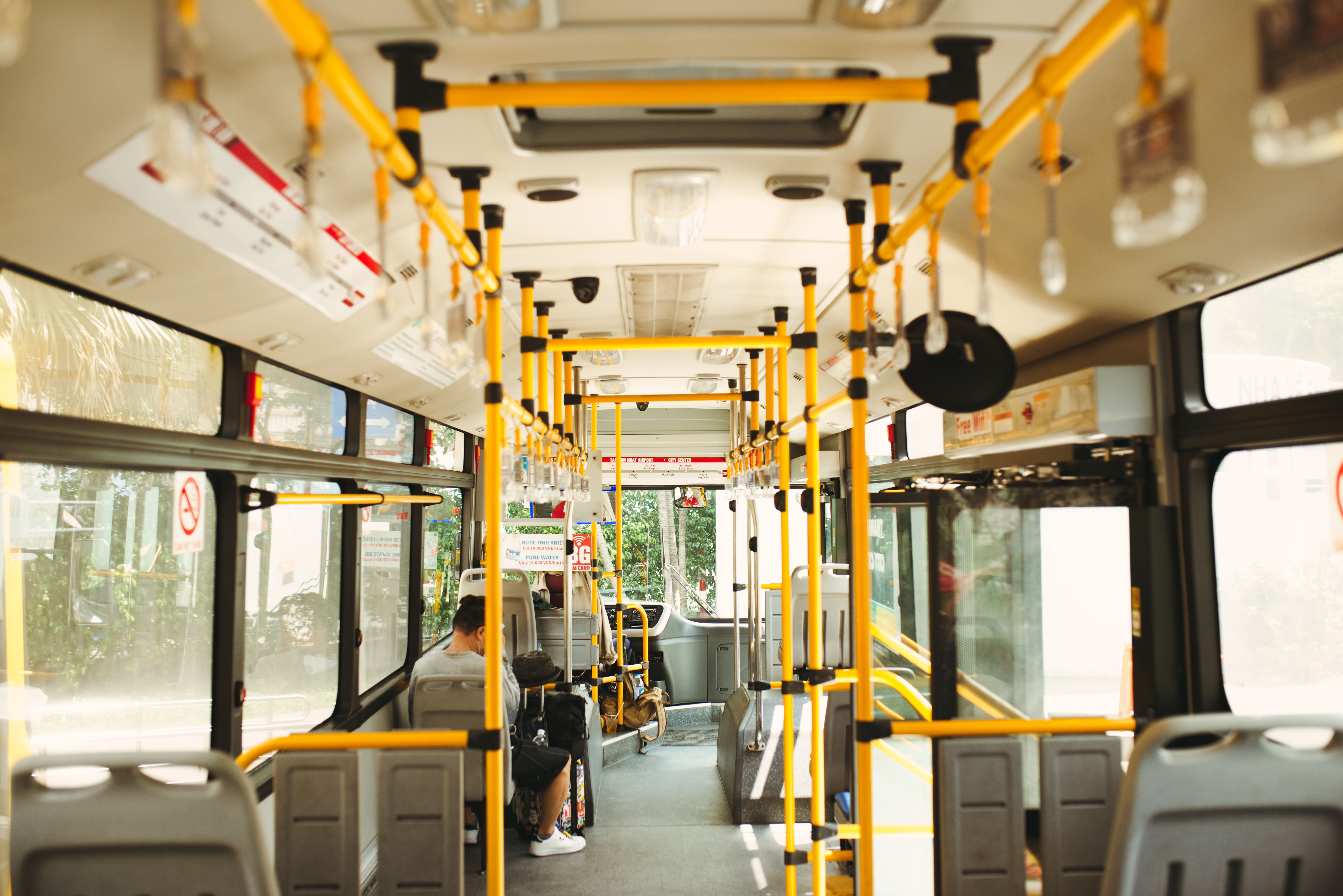
Another freedom you’ll regain with the G5 is the ability to travel via public transportation. In the past, you likely felt self-conscious about taking your oxygen tank on the subway or bus because there’s always the fear that someone will bump into it, or that your cart might break and you won’t be able to move it. However, the G5 is so small that you can rest it under your shoulder as you’re walking so that nobody bumps into it. It’s also much more durable than an oxygen tank so you won’t have to worry if it gets jostled around a little bit.

At the end of the day, the most important part about traveling is getting to spend quality time with friends and family. When you make the transition to the G5, you’ll be able to spend more time connecting with those around you rather than worrying about your oxygen therapy. A portable oxygen concentrator will enable you to be self-sufficient by managing your own oxygen delivery rather than feeling like you’re a burden on someone else. Depending on your age and the stage of COPD that you have, you may even be comfortable traveling alone, even if it’s just for a short period of time.
Conclusion
If you just purchased an Inogen One G5, congratulations! You own the most advanced and reliable portable oxygen concentrator ever produced! But if you want to make the most of your G5, you need to get out and start enjoying all the things you used to see and do. If you’re used to being held back and restricted by your oxygen therapy device, it’s time to take a step back and reframe your mindset. With the G5, there is very little standing in the way of you and your dreams or aspirations, so get out and get moving!
If you have any questions at all about operating your Inogen One G5, please don’t hesitate to get in touch with us by filling out the contact form to the right. We’ll get back to you as soon as we can.
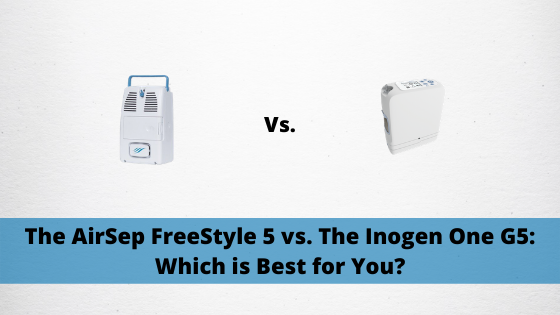
Whether you’ve recently been diagnosed with COPD or you’ve had it for some time, finding the right oxygen concentrator is key to your well-being. A high-quality oxygen concentrator that meets all your wants and needs will provide you with the freedom you need to get out and explore the world, pursue your dreams and aspirations, and most importantly, spend more time with friends and family. All of which would simply be impossible to accomplish while using a bulky and heavy oxygen tank or no oxygen therapy device at all.
While searching for a concentrator, new patients may find themselves overwhelmed with the number of options they have available to them and current oxygen patients looking for an upgrade to their device may not be aware of what options are available to them. This is why we do our best to break down the specifics of each and every concentrator on the market, so you can quickly and easily find the information you’re looking for and make a decision that you won’t regret later on.
It’s both a blessing and a curse that the oxygen industry moves so fast. It’s a blessing because it means technology is advancing quickly and it’s a curse because it’s harder to follow what’s going on. To help you demystify portable oxygen concentrators, we’re going to take an in-depth look at two of the most popular POCs currently on the market: The AirSep FreeStyle 5 and the Inogen One G5.
{{cta('b59df0c1-c4de-47a8-8e1c-0d33d4b414aa','justifycenter')}}
If you have any questions about either portable oxygen concentrator, be sure to leave a comment down below or fill out the contact form at the side of the page so we can reach out to you.
About the AirSep Brand
AirSep is one of the most recognizable brands in the oxygen therapy field. Offering impeccable portable oxygen concentrators like the FreeStyle 3, FreeStyle 5, and AirSep Focus has made a significant impact on the industry for years to come. They got their name “AirSep” because they primarily specialize in air separation products. This refers to any product that separates air into its primary components including nitrogen, oxygen, argon, and other inert gases.

AirSep has two different divisions: medical products and commercial products. In its commercial sector, it has created the largest two-bed pressure swing absorption (PSA) oxygen generating plant (42 tons a day) and in the medical field, they’ve produced the smallest oxygen generating unit ever made: The AirSep Focus (1.75 pounds). Needless to say, AirSep is committed to excellence in everything that they do, especially when it comes to providing oxygen patients with a reliable high-quality oxygen machine.
About the Inogen Brand
Since its inception in the early 2000s, Inogen has been laser-focused on one thing: providing oxygen patients with dependable, efficient, and durable portable oxygen concentrators. Inogen has always believed that COPD patients deserve the same freedom and independence as everyone else and that pulse dose portable oxygen concentrators were the way to make that happen.
.png)
As of the summer of 2019, Inognen has put out 5 pulse flow portable oxygen concentrators and one home oxygen concentrator. Their concentrators are so sought-after that they remain popular for many years after their release. The Inogen One G3, released in 2012, is still sold by most oxygen concentrator suppliers along with the Inogen One G4, released in 2015, and the Inogen One G5, released in July of 2019. Currently, the Inogen One G5 has the highest oxygen output of any pulse flow portable oxygen concentrator in the industry.
Maximum Oxygen Output
In many ways, buying a portable oxygen concentrator is a lot like buying a car. If you live in an area with unpredictable and extreme weather conditions, you’re not going to waste any time looking at cars that are bad in the snow. You’re going to start with a vehicle that suits your safety needs, then you’ll narrow down your options based on your preferences.
This is similar to buying an oxygen concentrator, only instead of looking at weight distribution and traction control, you’re looking at maximum oxygen output. This is important because not everyone has the same oxygen needs. For someone with stage 1 COPD, 300 ml/min of oxygen may be adequate. However, stage 4 COPD patients likely need over 1,000ml/min of oxygen in order to stay healthy. Ultimately, you and your pulmonologist will have the final say on which oxygen output suits you best.
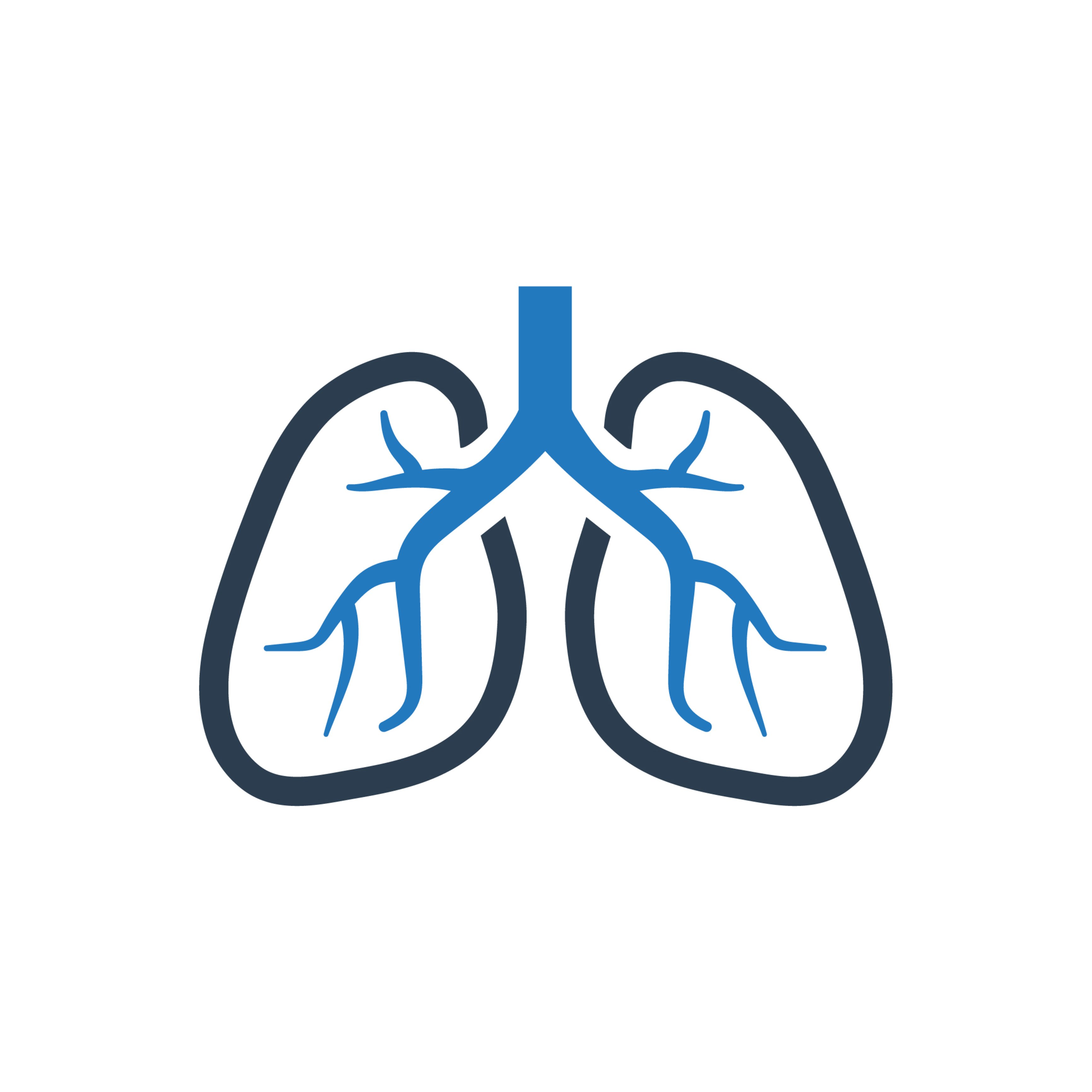
Another thing to note about oxygen needs is that they’re a variable. If you only go up to a flow setting of 3 on your pulse flow portable oxygen concentrator now, that doesn’t mean you’ll never have a need to go up to a higher setting later on. So, it’s nice to have some extra breathing room (no pun intended) to move your oxygen output either up or down.
With all that out of the way, you’ll be happy to know that both the Inogen One G5 and the AirSep FreeStyle 5 offer a high oxygen output. More specifically, the Inogen One G5 has pulse flow settings 1 through 6 with a maximum oxygen output of 1,260 ml/min of 90% (+6%/-3%) oxygen. The FreeStyle 5 has a maximum oxygen output of 1,000 ml/min of 90% (+5.5% -3%) oxygen with pulse flow settings 1 through 5.
When compared to most other oxygen concentrators on the market, these two portable oxygen concentrators offer outstanding oxygen output. What this means for you as an oxygen patient is that you’ll have more options available to you. If you’re someone who needs a high oxygen flow setting, you may avoid the need to switch over to a continuous flow portable oxygen concentrator which tends to be much heavier and difficult to operate. If your doctor or pulmonologist recommended a continuous flow POC, be sure to ask him/her about the Inogen One G5 and FreeStyle 5.
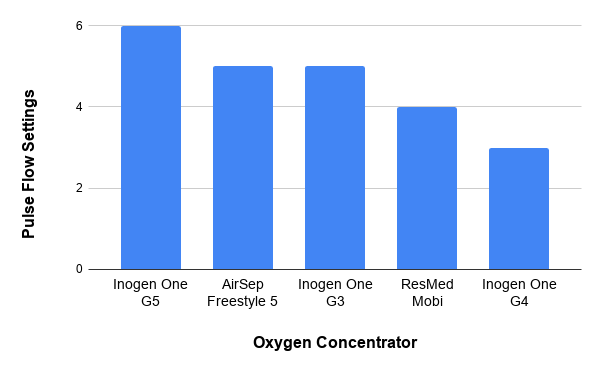
Weight
Let’s face it, as we get older it becomes much more difficult to carry things like a backpack, purse, or handbag. It’s not that there’s anything wrong with us, it’s just a natural part of getting older. On top of this, you’re likely experiencing a lot of breathlessness and chest pain from your COPD symptoms. And if you suffer from issues like arthritis or osteoporosis, this can further amplify these problems. Taking all these things into consideration, it’s no wonder most COPD patients want the lightest portable oxygen concentrator they can find.
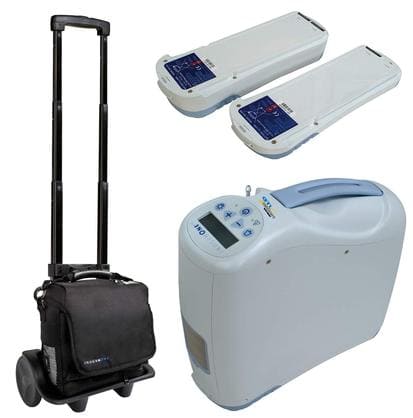
In the past, the issue of weight was mitigated by using rolling carts. This worked alright until you needed to get over a curb or lift your concentrator into a bus or up a flight of stairs. Fortunately, with the Inogen One G5 or the FreeStyle 5, you won’t have to worry about any of these issues. The G5 weighs in at just 4.7 pounds with the single battery and the FreeStyle 5 weighs in at just 6.7 pounds with the regular battery.
With that being said, The AirSep FreeStyle 5 is pretty heavy when it comes to pulse flow portable oxygen concentrators. Ideally, you’ll want to look for a portable oxygen concentrator that’s around 5 pounds or less if you want to carry it comfortably. While the FreeStyle 5 is commonly advertised as a POC that’s carried on your shoulder, it may be wise to invest in a rolling cart if it ever causes you back pain or exhaustion.
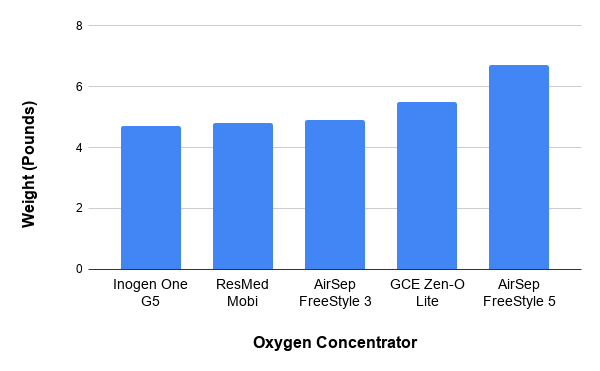
Size
There are two factors that you need to take into consideration when it comes to size: the overall volume that the portable oxygen concentrator takes up and the shape of the unit. The dimensions of the FreeStyle 5 are 10.7” H x 4.4” D x 6.6” W so it’s pretty tall compared to most portable oxygen concentrators. It also has a fairly large volume at about 311 cubic inches. However, due to the fact that it’s tall and skinny, you’ll find that it fits in a lot of small spaces quite easily.
The Inogen One G5 differs from the FreeStyle 5 in that it’s more box-shaped with the dimensions 8.15" H x 7.19" L x 3.26" W. It also has a much smaller total volume at just 211 cubic inches. What this means is that you’ll be able to take your Inogen One G5 more places and you’ll be able to store it more easily in your home or while you’re traveling.
{{cta('fa8abc2a-1e88-4fa3-82fd-1cb5b9ed43b2','justifycenter')}}
In general, pulse flow portable oxygen concentrators are much smaller than their continuous flow counterparts. The reason for this is that continuous flow devices usually also have pulse flow technology built into them. They can be transported just about anywhere you want, but they won’t offer you the same freedom and mobility that a pulse flow concentrator will. The FreeStyle 5 sort of straddles the line between pulse flow and continuous flow units in terms of weight.
Battery Life
One of the worst things about owning an oxygen tank is that the technology has reached a stopping point. Unfortunately, oxygen can only be compressed to a certain point, so if you want to carry more oxygen with you, you’re going to need to take a bigger tank. In stark contrast to this, portable oxygen concentrators run entirely off batteries — a technology that’s improving very rapidly.
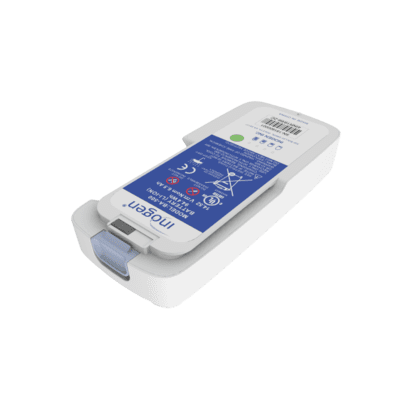
In recent history, lithium-ion batteries have been the gold standard due to their high storage capacity. These are the same types of batteries that are used in your phone allowing you to make calls and run apps all-day without running out of energy. This same technology is used in your POC to help you stay out and about longer. What’s more, scientists are experimenting with various other types of battery technology such as new generation lithium-ion, lithium-sulfur, and solid-state. So there is a lot to look forward to when it comes to the future of portable oxygen concentrators.
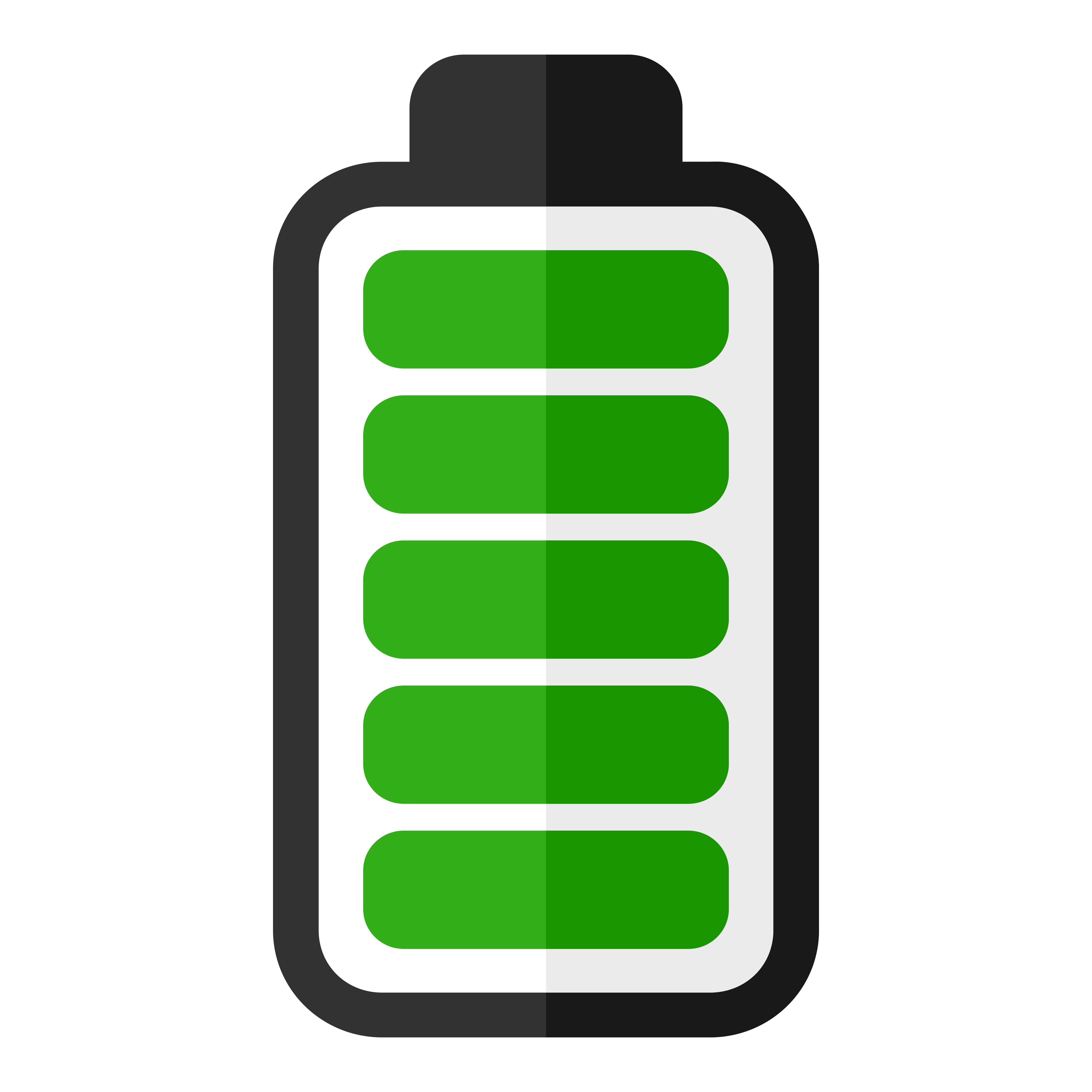
Aside from the CAIRE FreeStyle Comfort, the Inogen One G5 has the longest external battery life of any portable oxygen concentrator. With the 8-cell battery, it can push 6.5 hours on one charge using the lowest flow setting. With the 16-cell battery, it can achieve an astounding 13 hours of battery life on one charge! The FreeStyle 5 is much less impressive in this regard, offering only 4.25 hours of battery life on one charge.
If your goal is to get out and do more without worrying about your oxygen supply, it’s clear that the Inogen One G5 is for you. Even with the 8-cell battery which comes with the G5, you’ll easily get 2 more hours out of your battery than you would with the FreeStyle 5’s battery. With the 16-cell battery, you’ll likely have a surplus of battery life so you shouldn’t have a need to carry a second battery of rush home to charge your device. Remember that both the FreeStyle 5 and Inogen One G5 come with both AC and DC charging cables, so you’ll be able to charge them in both a wall outlet and in your car.
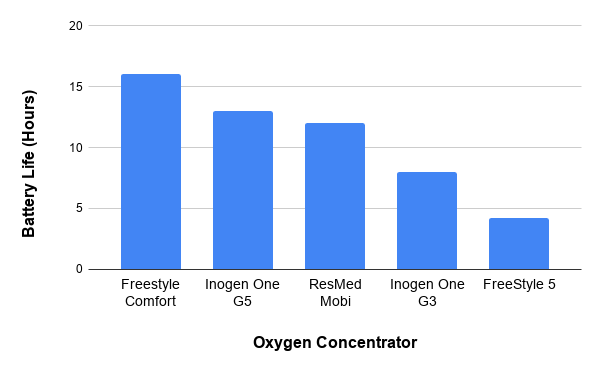
Sound Level
Since oxygen tanks make very little or no noise at all, many oxygen patients switching over to concentrators are concerned that their new device will be loud. Fortunately, this is not the case. While pulse flow portable oxygen concentrators are louder than oxygen tanks, they are quiet enough to take them in public areas such as a church or even a library.
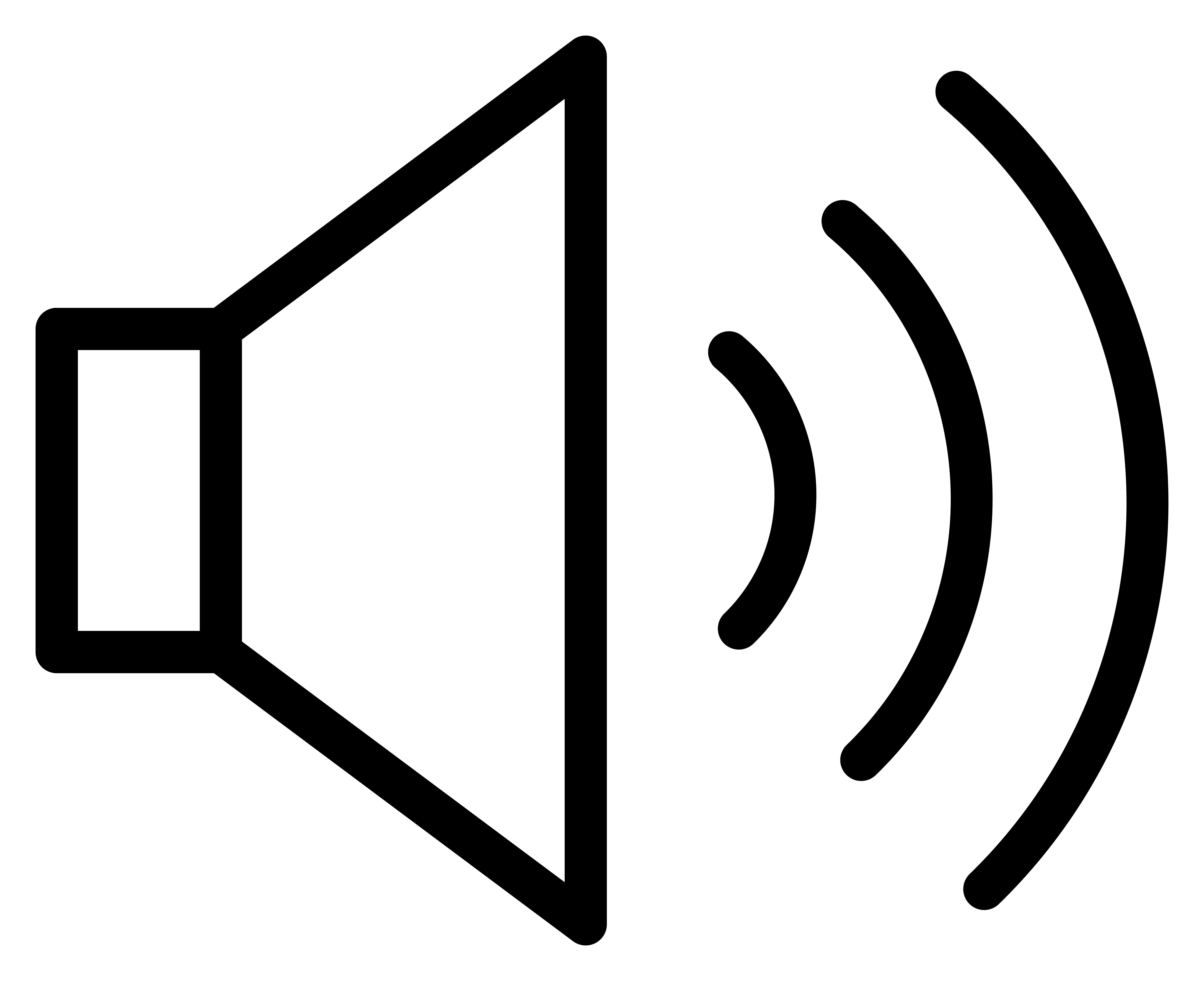
Most people compare the sound of an oxygen concentrator to a refrigerator or similar appliance. It does make a slight buzzing noise, but once you get used to the sound, you’ll hardly notice it’s there. Another thing to note is that there are audible alerts that will notify you about low battery life, column status, and breath detection. All of these alarms can be disabled if you don’t want the extra noise.

On a flow setting of 2, the Inogen One G5 is around 37 decibels (dBA). The FreeStyle 5 will be at about 48 dBA on a setting of 3. So, the latter will definitely be a little bit louder but it’s still about the sound level of a quiet conversation or whisper. Take note, however, that if you reduce the flow setting, the total sound level will reduce. If you increase the flow setting, the decibels will increase.
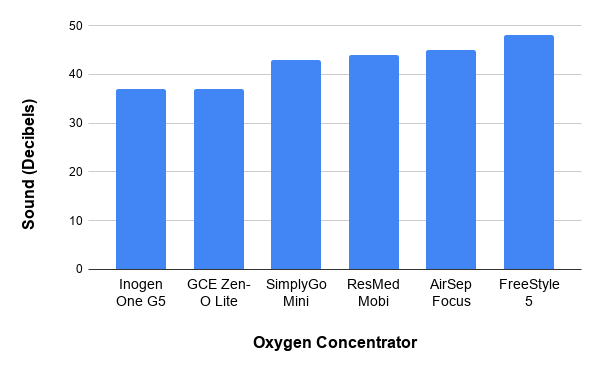
Inogen Connect
One of the unique standout features of the Inogen One G5 is the Inogen Connect. This is a mobile phone or tablet application introduced with the Inogen One G4 that allows you to check your battery status, column status, troubleshooting information, and much more, all without touching your portable oxygen concentrator. To set it up, simply install the app and follow the directions to connect it to your oxygen machine.
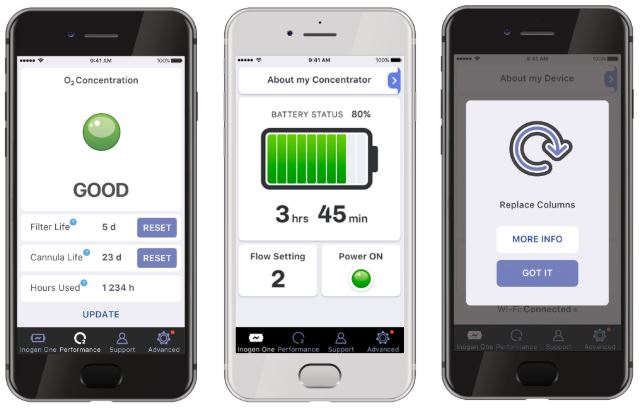
This app is especially useful for people who are on the go frequently and don’t have a lot of time to stop and check their oxygen concentrator. People who use the Inogen One G5 Backpack love this app because it allows them to check the status of their device without having to remove the backpack and swing it around their shoulder every time they want to check the battery life of their oxygen concentrator.
The Ideal Candidate for the AirSep FreeStyle 5
While the AirSep FreeStyle 5 has been around for quite some time, it’s still a reliable portable oxygen concentrator produced by one of the most trusted and recognizable brands in the industry. AirSep has set its sights on breaking boundaries in the air separation industry and the FreeStyle 5 is one of their greatest accomplishments yet alongside the AirSep Focus, the lightest portable oxygen concentrator ever produced.

The FreeStyle 5 excels when it comes to maximum oxygen output, size, ease-of-use, and quality, but it leaves a lot to be desired when it comes to weight and battery life. It will provide you with a reliable supply of oxygen wherever you go, but after being out for several hours you may find yourself more exhausted and out of breath than usual. With only a few hours of runtime on your battery, you may find that this holds you back too.
The Ideal Candidate for the Inogen One G5
At this point in time, the Inogen One G5 is the most sought-after portable oxygen concentrator on the market. It’s hard to beat the G5 because it excels in every area that matters to oxygen patients: maximum oxygen output, battery life, weight, size, and durability. What’s more, it offers additional features like the Inogen Connect which makes maintaining your device a breeze.

Above all else, you know that the Inogen One G5 is supported by a reputable brand. Inogen has 20 years of experience with producing oxygen concentrators and it seems as if they create something revolutionary with the release of each new unit. Because Inogen concentrators are so popular, you know that you’ll be able to find replacement parts or services for your oxygen machine well into the future and you’ll never be left high and dry with a concentrator that doesn’t work.
Conclusion
It can be a challenge finding the perfect portable oxygen concentrator for your lifestyle. However, the good news is that there are plenty of high-quality machines and reputable oxygen suppliers that can help you find exactly what you’re looking for. Before purchasing a unit, be sure to fill out the contact form at the side of the page. Our oxygen specialists will get in touch with you and they’ll help you make educated decisions about your oxygen usage. In the meantime, if you have any comments or concerns, feel free to leave them below.
-1.png)
Oxygen is a colorless and odorless gas that is essential for maintaining life on earth. In humans, oxygen plays a crucial role in a process called cellular respiration where nutrients in the body are broken down and converted to usable energy. The atmosphere is around 21 percent oxygen which is enough for healthy lungs to maintain every cell in the body.
Unfortunately, not everyone has healthy lungs. Those suffering from respiratory diseases like chronic obstructive pulmonary disease (COPD) and cystic fibrosis (CF) have decreased lung function meaning the small amount of oxygen found in the atmosphere is not enough to keep them healthy. These people may experience symptoms like shortness of breath and chest pain. Long-term oxygen deficiency can even lead to organ damage and increase their risk of experiencing a heart attack.
Oxygen concentrators are one of the most popular methods of oxygen delivery because, as long as they have a source of power, they are able to provide an infinite supply of oxygen. This enables oxygen patients to have more freedom in their day-to-day life by allowing them to focus on what they’re doing rather than worrying about their oxygen supply. Since the early 2000s, Inogen has been the leading manufacturer of pulse flow portable oxygen concentrators with their “G” series of products.
{{cta('fa8abc2a-1e88-4fa3-82fd-1cb5b9ed43b2','justifycenter')}}
A History of Inogen Inc.
Inogen Inc. was founded in 2001 with the goal of providing oxygen therapy patients with a better solution to their needs. As opposed to compressed oxygen tanks, commonly used throughout the 1900s, Inogen believed oxygen concentrators were the way of the future. Their mission was to make them much smaller, more lightweight, and easier to use than ever before. The way they sought to do this was by using pulse dose technology.

Pulse dose is an oxygen delivery method that was invented to solve the issue of wasted oxygen. On a traditional continuous flow oxygen concentrator, oxygen is put out in a constant stream like a water fountain, indiscriminate of the user’s breathing rate. The downside of this is that there is a lot of wasted oxygen. On the other hand, however, pulse dose concentrators are designed to only distribute oxygen when the patient inhales. This enables oxygen manufacturers to make their portable breathing machines much smaller and lighter.
Aside from the Inogen at Home Oxygen Concentrator, Inogen has made use of pulse dose technology in every one of their oxygen devices. The most notable line of concentrators they offer is their “G” series. The “G” stands for generation, but don’t let the name fool you; older Inogen concentrators are still popular and viable even after the release of newer gen machines. Let’s take a look at each Inogen One unit to see how they compare.
The Inogen One
The Inogen One Oxygen Concentrator was the first pulse flow oxygen machine released by Inogen, inc. At the time of its release, most oxygen concentrators were designed for in-home use only. In other words, they had no battery attached to the device. They would need to be plugged into a wall outlet in order to run. While the Inogen One oxygen concentrator only offered around 2 or 3 hours of battery life without needing to be charged, it was still much more than what people were used to.
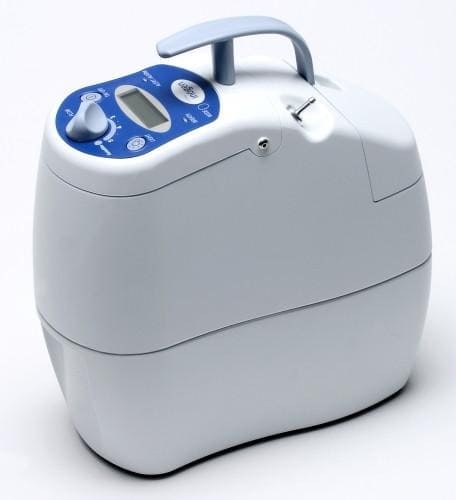
In many ways, the original Inogen One concentrator was a lot like modern continuous flow oxygen concentrators. Because pulse dose technology was in its infancy, this oxygen machine weighed in at 9.8 pounds. This is very heavy when compared to modern pulse flow portable oxygen concentrators and as a result, it was typically transported by using a carrying cart rather than slung over the patient’s shoulder.
The Inogen One went up to a flow setting of 5 and had a unique feature called the “Satellite Conserver.” This was a device that was sold separately from the concentrator. It was attached to the oxygen tubing and allowed oxygen patients to increase the length of their tubing up to 100ft. In other words, you could have your oxygen machine charging in one room of the house while you’re doing something in another room. However, due to safety concerns, this feature was removed from future generation oxygen machines.
The Inogen One G2
The Inogen One G2 was largely built off the back of the original Inogen One. It had a very similar design with the carrying handle and control panel located on the top of the unit. In terms of specs, the Inogen One G2 improved in nearly every facet: the pulse flow settings were increased from 5 to 6; the battery life was increased from 3 hours to 8 hours; the sound level was reduced from 40 decibels (dBA) to 38 dBA, and the weight was reduced from 9.8 pounds to 7 pounds. While the Inogen One G2 was significantly lighter than the Inogen One, it was still primarily transported with a carrying cart.
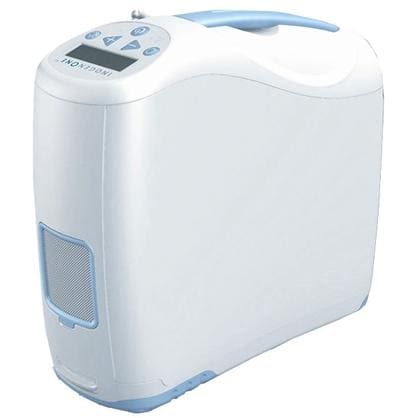
Another notable improvement of the Inogen One G2 was in terms of its enhanced usability. As opposed to the Inogen one which required you to pull down a hatch on the front of the unit in order to replace a battery, the G2 has batteries that detach directly from the bottom of the unit. The particle filter, which is responsible for removing impurities from the air, is also fully visible on the front of the concentrator. To clean it, simply pull on the tab, wash it off, and replace it once you’re done.

The Inogen One G3
The Inogen One G3 released in the fall of 2012 and to this day is still one of the most popular portable oxygen concentrators on the market. Weighing in at just 4.8 pounds and running up to 8 hours on one charge, the G3 is a great unit all around whether you simply want to get out for a few minutes each day or you want to travel around the world.
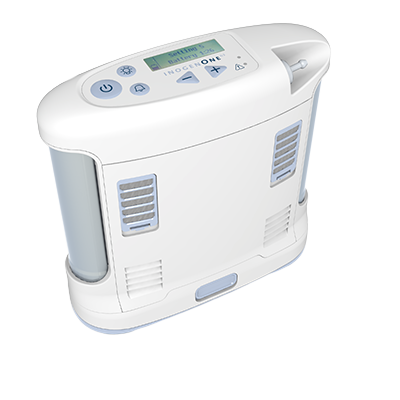
Likely one of the first things you’ll notice about the Inogen One G3 is that it underwent a significant design change from the previous two Inogen models. Instead of having a handle on top of the unit and the filters on the front, the G3 has no handle on it and the particle filters were moved to either side. The front and the back of the unit now have the columns, the component that’s responsible for filtering nitrogen out of the air. Since the G3 is so much lighter than all previous iterations, there was no longer a need for the handle because it can be carried over the shoulder using the Inogen One G3 Carrying Case.
Another great carrying option for the Inogen One G3 is the GO2 Carryalls. These bags were released quite a while after the release of the G3 but they offer G3 owners one more option for transporting their oxygen machine simply and comfortably. Unlike the normal carrying bag that comes with the G3, the GO2 Carryall offers a more fashionable and stylish option. The GO2 Carryall is designed like a purse and is made of 100% genuine leather. It can either be used as a handbag or slung over your shoulder. If you’re someone who’s self-conscious about carrying your portable oxygen concentrator, or you’re just looking for a bag that matches your outfit, the GO2 Carryall is a great option.
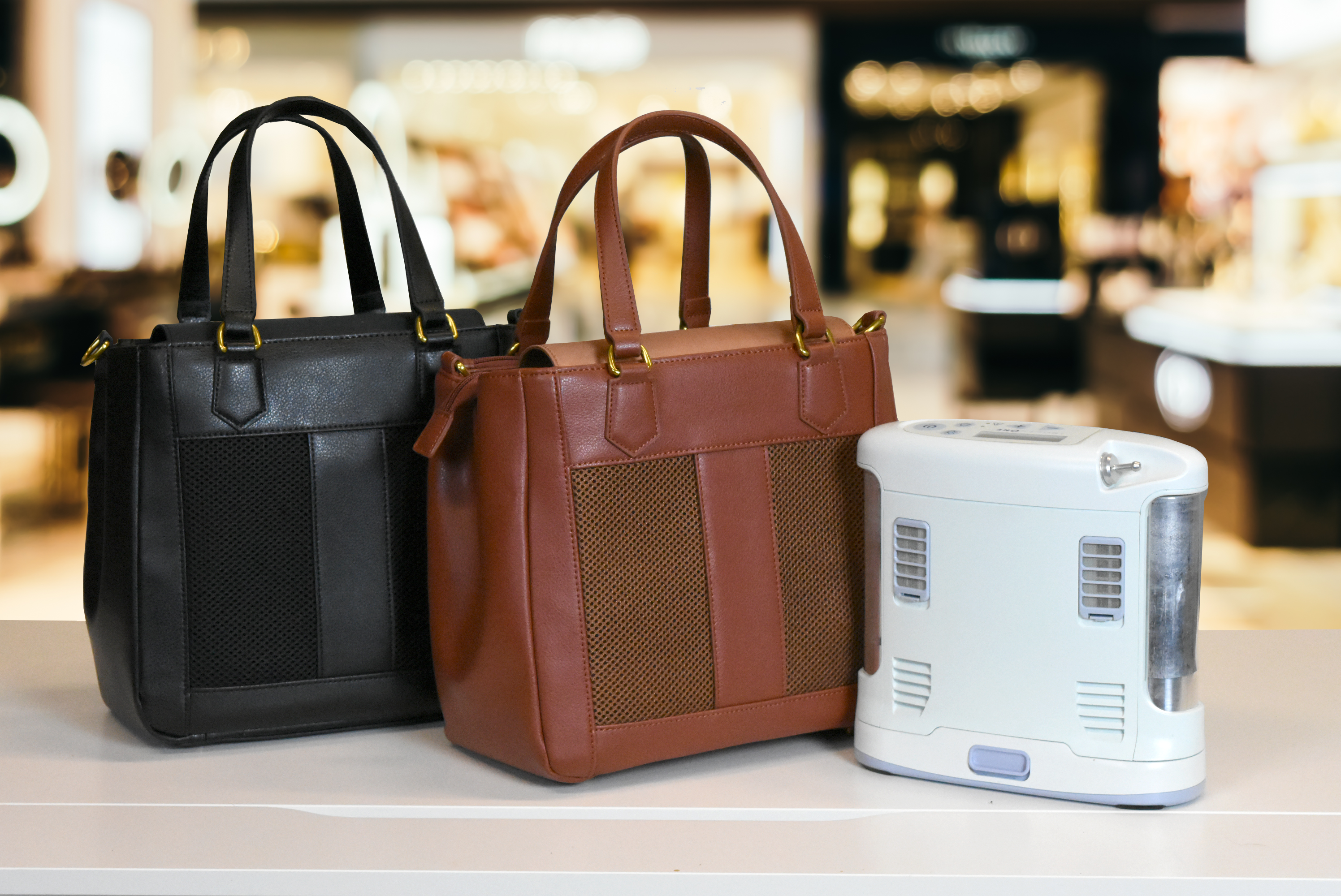
If the traditional carrying case or GO2 Carryalls don’t suit your needs, you’ll be happy to know there are two more options: the Inogen One G3 backpack and the Inogen One G3 Rolling Backpack. The regular G3 backpack is ideal for the traveler. If you enjoy taking trips around the country or even outside of the country, this backpack offers plenty of room for all your G3 accessories and even more room for additional personal belongings like your cell phone, tablet, laptop, car keys, and much more! The greatest part about all of this is that it holds your G3 securely and the control panel will be visible so you can make quick changes to your device’s settings. When it’s in the pouch, the G3 will be tucked close to you so that it doesn’t add any extra strain on your back as you go about your day.
The other carrying option, the G3 Rolling Backpack, is perfect if you want to pull your G3 behind you. However, the unique thing about this accessory is that it also has straps, so if you decide you want to pick it up and carry it on your shoulders, you can do that too! The ideal candidate for the G3 Rolling Backpack is someone who either issues with back or shoulder pain or someone who wants to have a versatile carrying option. Either way, you can’t go wrong with the G3 rolling backpack!
.png)
All-in-all, the Inogen One G3 was one of the first oxygen machines to prove that it’s possible to have a great all-in-one portable oxygen device. Instead of sacrificing certain benefits, Inogen proved that it’s possible to make a POC that excels in every way including maximum oxygen output, lightweight design, battery duration, and ease-of-use. What’s more, Inogen took the time and effort to ensure every oxygen patient could customize their oxygen experience to their needs by releasing a slew of high-quality accessories.
The Inogen One G4
In many ways, the Inogen One G4 is an oddball when compared to the previous three portable oxygen concentrators Inogen had released. Rather than trying to improve on all aspects, Inogen wanted to make a portable oxygen concentrator that limited weight as much as possible. The result was one of the lightest portable oxygen concentrators ever produced!
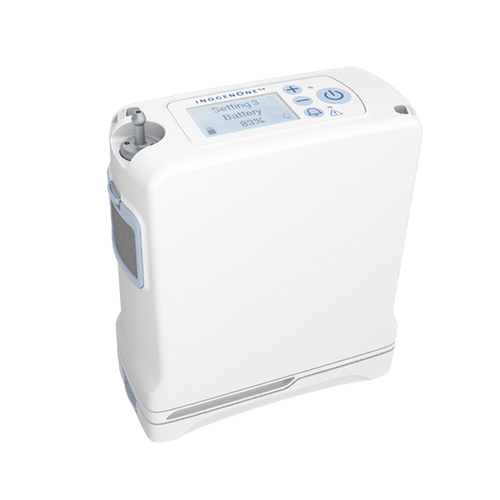
The Inogen One G4 weighs in at just 2.8 pounds! That’s just over a pound more than the AirSep Focus, the lightest portable oxygen concentrator on the market. Unfortunately, in order to achieve this feat, a number of other benefits were sacrificed with the G4. The flow settings are down from 5 with the G3 to 3 with the G4; battery life was reduced from 8 to 4.5 hours, and the sound level went from 39 dBA up to 40 dBA.
With that being said, none of this makes the Inogen One G4 a “bad” portable oxygen concentrator. In fact, it’s pretty amazing how much power Inogen was able to pack into such a small and lightweight portable oxygen concentrator. Despite having a lower oxygen output and shorter-lasting battery life than the Inogen One G3, it will still be a great option for a lot of people out there.
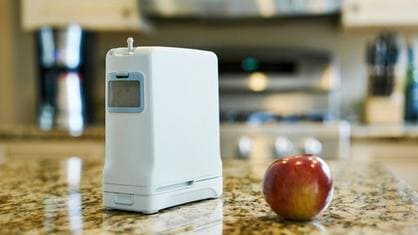
The ideal candidate for the Inogen One G4 is someone who has low oxygen flow needs but wants a reliable and lightweight unit. At only 7.2” H x 5.91” L x 2.68” W, the Inogen One G4 is extremely small so you won’t be bumping into anyone or anything if you’re walking in a crowded area. It’s even small enough to fit in a purse, although that’s not advised because your G4 needs to be able to take in air through its intake vent.
The majority of oxygen patients use a flow setting of 2, so for a lot of people, the G4 will serve them just fine. If you suffer from back or shoulder pain, the lightweight design of the G4 will ensure that you never feel encumbered and it will prevent that feeling of breathlessness if you’re out of the house for an extended period of time.

One of the additional features that was added with the Inogen One G4 is the Inogen Connect. This is an application that can be downloaded on your smartphone or tablet The app connects your phone to your G4 wirelessly using Bluetooth and provides you with up-to-date information about its battery status and column integrity. Another thing this app allows you to do is to check your device’s user manual no matter where you are in the world. This means you’ll never have to carry around a hard copy of your user manual because you’ll always have access to it on your phone.
The Inogen One G5
The Inogen one G5 was released in the summer of 2019 and it’s the latest oxygen concentrator manufactured by Inogen. The Inogen One G5 is one of the most advanced and sought-after portable oxygen concentrators on the market, and in many ways, it’s a continuation of what the Inogen One G3 set out to accomplish back in 2012.
.png)
With flow settings 1 through 6 and a maximum oxygen output of 1,260 ml/min of oxygen, the G5 currently holds the record for the highest oxygen output of any pulse flow portable oxygen concentrator. This is a huge deal because it means many oxygen patients who previously used continuous flow oxygen concentrators can now switch over to the lighter and smaller pulse flow units.
If that wasn’t enough, you’ll be happy to know that the G5 also offers a better battery life than most oxygen concentrators on the market. The only pulse flow portable oxygen concentrator to surpass the G5 in terms of external battery life is the CAIRE Freestyle Comfort which can run up to 16 hours on one charge!

The Inogen One G5 has a built-in technology called an Intelligent Delivery System. Typically, your pulse dose oxygen concentrator will deliver oxygen doses whenever you inhale. However, the Intelligent Delivery System accounts for many other factors such as how deep of a breath you take as well as changing breathing patterns. What this means is that you can use your oxygen concentrator 24/7 even when you sleep. All the while, your POC will provide you with your needed oxygen.
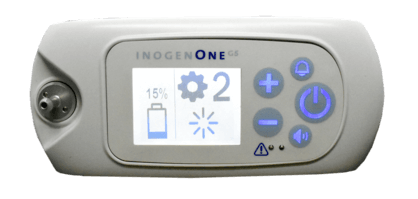
The Inogen Connect also made a return with the Inogen One G5. It works in the exact same way as it did with the G4 and of course, if you’re not interested in the app, you don’t have to use it. However, it is very useful if you want to be able to check the status of your device without ever having to look at it.
Why Are Inogen Concentrators so Popular?
Now that you know a bit about each of these portable oxygen concentrators, you may be wondering, “what makes Inogen concentrators stand out?” While there are many great oxygen concentrator manufacturers out there, few are able to provide oxygen patients with the reliability that Inogen does.

Inogen Inc. realized very early on that oxygen patients have goals, dreams, and aspirations, and outdated oxygen therapy devices like compressed oxygen tanks and liquid oxygen tanks were not providing them with the options they needed. Ever since their inception, Inogen has been laser-focused on making their oxygen concentrators more powerful, reliable, and easy to carry. Judging by the products they’ve put out, they’ve accomplished this with flying colors in a way that many other oxygen companies could not.
What’s Next for Inogen Portable Oxygen Concentrators?
Another question you may be wondering is, “what’s the next major innovation coming for portable oxygen concentrators?” While it’s impossible to say where oxygen therapy technology will be in five or ten years from now, it’s possible to make an educated guess based off where they are now and the direction they’re headed.

It’s likely that oxygen manufacturers like Inogen will continue to focus on refining pulse dose technology. AirSep has already proven that it’s possible to make an oxygen concentrator under 2 pounds and Inogen has proven that pulse dose can provide adequate oxygen for the majority of patients, so at this point, it’s just a matter of combining the two. Another thing that will likely improve is battery life. The Inogen One G5 offers a long battery life, but on higher flow settings, that number is cut down significantly. We’ll likely see this improve in the coming years.

Last but certainly not least, we’re likely to see a lot more interconnectivity between oxygen concentrators and other devices you own like your laptop, tablet, or smartphone. The Inogen Connect is just one example of what this may look like. However, other companies have experimented with it using their CAIREView™ Telehealth Technology. CAIREView™ is a system built into every Freestyle Comfort POC that allows you to track your oxygen usage, send and receive information from your oxygen provider, and remotely troubleshoot your device.
Conclusion
Inogen Inc. has a long history of success, primarily when it comes to manufacturing pulse dose portable oxygen concentrators. It’s estimated that about 4.5 million patients around the world rely on Inogen concentrators for their oxygen needs. A number that’s sure to grow as they develop new reliable and innovative oxygen concentrators. If you’d like to learn more about Inogen oxygen machines, stay tuned to our blogs where we cover all the latest information pertaining to oxygen devices.
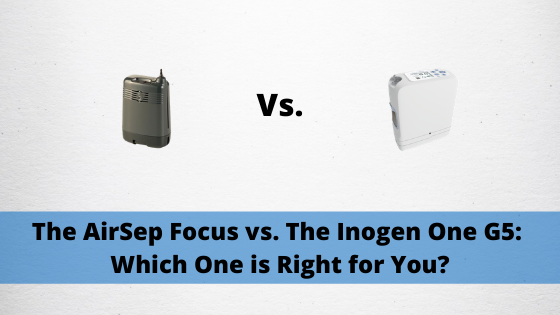
Medical oxygen is a necessity for patients with COPD, cystic fibrosis, and other chronic respiratory diseases. Its purpose is to maintain pulmonary stability, reduce symptoms of breathlessness and chest pain, and to ensure blood oxygen levels remain normal. There are many different types of oxygen therapy including compressed oxygen tanks, liquid oxygen tanks, home oxygen concentrators, and portable oxygen concentrators.
Because oxygen therapy is such an important treatment method for so many people, you would think it would be easy to find the right oxygen machine. However, once you start looking into it, you’ll realize that there are a lot of variables to take into consideration. First and foremost, you need to ensure your new device meets your oxygen demands. This way, you’ll avoid many of the common respiratory symptoms associated with your disease.
Secondly, you need to look for an oxygen device that matches your lifestyle. While you can opt for something like an oxygen tank or home oxygen concentrator, these devices will keep you homebound and you likely have things that you need to get out of the house and do. Ultimately, the best option for most oxygen patients are pulse flow portable oxygen concentrators. In this post, we’re going to take a look at two of the most popular pulse flow machines on the market: the Inogen One G5 and the AirSep Focus.
AirSep Company Overview
AirSep was founded in 1987 in Buffalo, New York. In 2012, it was acquired by Chart Industries, a manufacturer of equipment used to store industrial and hydrocarbon gases. Since its inception, AirSep has been a global leader in oxygen concentrator manufacturing. They produce a wide array of oxygen concentrators and they distribute their products in more than 100 countries around the world.
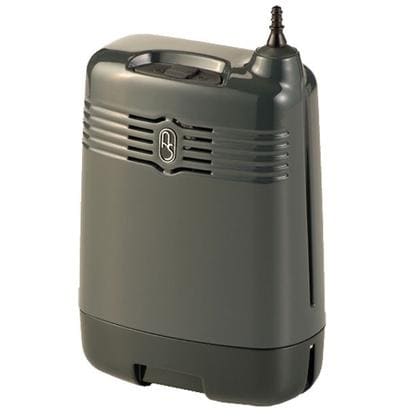
AirSep is one of the most recognizable brands when it comes to oxygen concentrators. Units like the AirSep Freestyle 3, AirSep Freestyle 5, and AirSep Focus as well as a host of home oxygen concentrators have taken the industry by storm, offering oxygen patients a reliable high-quality oxygen machine that they can use for years to come. They’re also one of the most innovative companies in their field, always looking for ways to make their oxygen concentrators more mobile, dependable, and efficient.
Inogen Company Overview
Although Inogen is a rather new company compared to most medical oxygen companies out there, that hasn’t stopped them from becoming one of the most recognizable brands to produce oxygen machines. Inogen was founded in the early 2000s with the mission of improving the freedom and independence of oxygen patients by offering high-quality and innovative products. Most people would say they’ve accomplished this with flying colors.
.png)
This company has made great strides with its Inogen One G series of products. Their latest portable oxygen concentrator, the Inogen One G5, has broken records with its superb battery life and high oxygen output. In fact, Inogen’s products have been so successful that their older generations of POCs like the Inogen One G3 and Inogen One G4 are still very popular to this day.
{{cta('fa8abc2a-1e88-4fa3-82fd-1cb5b9ed43b2','justifycenter')}}
Maximum Oxygen Output
The most important thing to note when choosing between the AirSep Focus and the Inogen One G5 is the total oxygen output of each unit. Portable oxygen concentrators differ from oxygen tanks in that they have a limited amount of oxygen that they can put out in a given amount of time. Before you purchase one, you’ll want to ensure that it achieves the recommended dosage of oxygen prescribed by your doctor or pulmonologist if you want to experience its full benefits.

The AirSep Focus and the Inogen One G5 portable oxygen concentrator are on the opposite end of the spectrum when it comes to oxygen output. The Focus goes up to a setting of 2 which is the equivalent of about 330 ml/min of oxygen. The Inogen One G5, on the other hand, has the highest oxygen output of any pulse flow oxygen concentrator on the market with 6 pulse flow settings; the equivalent of 1,260 ml/min of oxygen.
There’s a reason we mentioned oxygen output before anything else. If the AirSep’s 330 ml/min of oxygen does not meet your needs, you should no longer consider it as an option despite its other qualifications. Like we mentioned earlier, it’s important to find an oxygen concentrator that meets your needs because if it doesn’t, you’re more likely to experience symptoms such as breathlessness, chest pain, and lightheadedness.
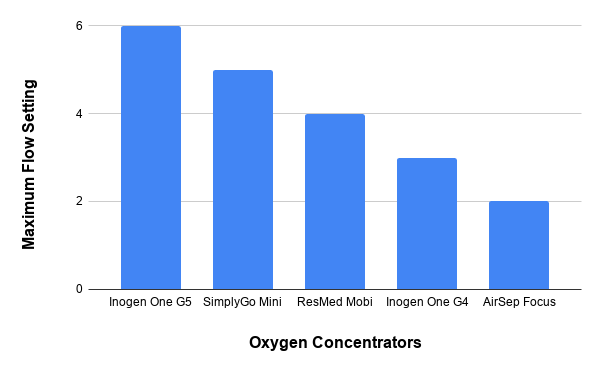
Weight
Another important factor when choosing a portable oxygen concentrator is its weight. Having a light unit means having the freedom to go where you want without the fear of becoming exhausted, out of breath, or experiencing back or shoulder pain. Fortunately, there are a lot of great lightweight oxygen concentrators out there and the Inogen One G5 and AirSep Focus are two of the best.
The AirSep Focus is currently the lightest portable oxygen concentrator in the world. Not only that, but there aren’t any portable oxygen concentrators that even come close! The Focus weighs in at just 1.75 pounds! The second-lightest portable oxygen concentrator is the Inogen One G4 which weighs in at 2.8 pounds. If you’re someone who suffers from back pain, shoulder pain, or you want to carry a lot of personal belongings for traveling, the AirSep Focus has a lot to offer. When you have the device slung over your shoulder or back, you’ll hardly know it’s there. You’ll be able to go about your day without ever becoming fatigued or out of breath.

The Inogen One G5 isn’t quite as light as the AirSep Focus, but in the grand scheme of things, it’s still one of the lightest oxygen concentrators ever produced. The G5 weighs in at just 4.7 pounds which is still light enough to carry it wherever you please. Whether you want to take a quick trip to the grocery store or you’re planning a trip around the world, the G5 is light enough to accompany you the whole time without causing you to overexert yourself.
Another great thing about having a pulse flow oxygen concentrator like the G5 and Focus is that you will never need to use a carrying cart. Portable oxygen cylinders and continuous flow portable oxygen concentrators are often too heavy to carry on your shoulders, so you need to wheel them around on a cart. Unfortunately, if you want to enjoy full freedom and independence, this is not ideal. When you can carry your POC on your shoulder, you won’t be bumping into things, or more importantly, into other people.
.png)
Size
Size is another important factor to consider when you’re buying a portable oxygen concentrator. Pulse flow oxygen concentrators are known for being smaller and more compact than their continuous flow counterparts and the Focus and G5 are no exception. The dimensions of the AirSep Focus are 4.8" W x 2.5" D x 6.4" H meaning it’s also the world’s smallest portable oxygen concentrator! The Focus is small enough to fit in a purse and you can even clip it onto your belt. However, it’s recommended that you only use official AirSep Focus carrying bags to ensure it receives the airflow it needs in order to run properly.
The Inogen One G5 also has a small form factor at just 8.15" H x 7.19" L x 3.26" W. This isn’t quite small enough to fit in a handbag, but it’s small enough for you to feel comfortable carrying it at your side under your arm. If you want, you can even carry it on your back using the Inogen G5 backpack. This accessory will allow you to carry your Inogen One G5 securely while also carrying a host of other personal items. If you’re more of a minimalist, however, you may opt for something like the G5 custom carrying case.
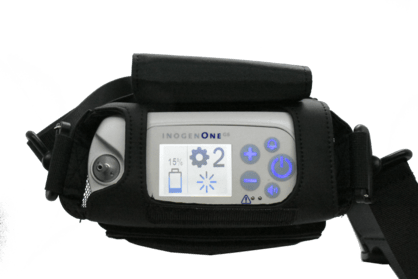
Another reason size is important is for storage purposes. If you’re someone who doesn’t use your oxygen device 24/7, you’re going to need to be able to store it easily either in your home, your car, or anywhere else. If you fly often, the G5 and Focus can easily be stored under the seat in front of you while you’re taking off and landing, and you’ll be able to walk down the aisle without the fear of bumping into people around you. Fortunately, both of these portable oxygen concentrators are also durable so you won’t have to worry about them breaking while you’re out and about.
Battery Life
Each portable oxygen concentrator has two different battery options: a smaller single battery and a larger double battery. The AirSep Focus micro battery will run up to 1.5 hours on one charge and the larger battery will run up to 3.5 hours on one charge. On the other hand, the Inogen One G5’s single battery will provide 6.5 hours on one charge and 13 hours with the double battery.

As you can see, the G5 will offer you significantly more battery life than the AirSep Focus. This will enable you to stay out longer without having to run home to charge your device. What’s more, with the Inogen One G5 DC charging cable, you’ll be able to charge your G5 in the cigarette lighter in your car as well. What this means is that if you’re on a road trip, you can keep your device fully charged and ready for you to go out and sightsee all day and night.

You’ll be able to stay out for a while with the AirSep Focus as well, but you’ll need to carry a couple of extra battery packs with you. Since the batteries are so small and lightweight, this shouldn’t be a problem. Since the AirSep Focus is alright very light, you can carry it on your belt and then use a separate bag to hold your batteries, other accessories, and personal belongings.
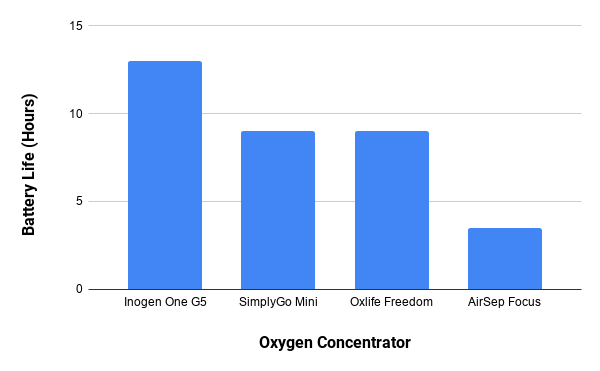
Ease-of-Use
In this day and age, anything that can make your life easier is a plus. For better or for worse, technology has made peoples’ lives more complicated than ever, but that doesn’t mean our healthcare should be the same. If your oxygen concentrator is complicated and difficult to use, you’re not going to be a happy camper when you have to make adjustments to it, especially if you’re away from home. The good news is that portable oxygen concentrators like the Focus and G5 are extremely easy to use. Most modern portable oxygen concentrators only have a few buttons: one to turn on the device and two to adjust the flow settings.

Maintenance is another aspect of ease-of-use. In the past, if you used oxygen tanks for oxygen therapy, it was very difficult to do any type of maintenance on the fly. If your oxygen tank started leaking, you needed to refill the oxygen tank, or you wanted to add an oxygen conserver, you would need to speak with an expert. However, pulse dose POCs have made it possible for oxygen patients to perform the majority of maintenance tasks on their own.
{{cta('b59df0c1-c4de-47a8-8e1c-0d33d4b414aa','justifycenter')}}
One maintenance task every oxygen user will need to do is replace their batteries. Whether you’re at home or on the go, replacing your portable oxygen concentrator batteries with fully charged ones will give you the freedom to stay out longer and do more. Luckily, with the AirSep Focus and Inogen One G5, you’ll be able to do this in a matter of seconds. Both of these oxygen concentrators have external batteries. Focus batteries are separate from the unit and can be worn on your belt or put in your pocket. Inogen G5 batteries can be attached or removed from the bottom of the unit.
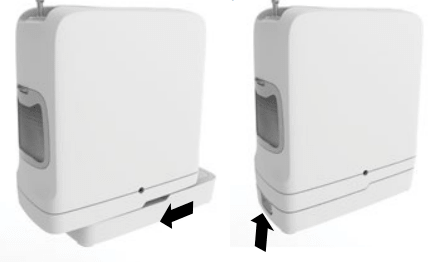
All things considered, the Inogen One G5 takes the cake when it comes to ease-of-use. With a simple-to-use interface on the top of the unit, you’ll be able to adjust your flow setting on the fly and check your battery life. Batteries can be removed with the simple press of a button and replaced with fully charged ones. While the Focus is easy to use, oxygen users may find that having a battery that doesn’t attach to the unit itself will add extra hassle to their day.
Additional Features
Not only do modern portable oxygen concentrators offer lightweight design, small form factor, and plenty of battery life, but oxygen manufacturers are constantly looking for new and innovative ways to make oxygen patients’ lives easier. The Inogen One G5 offers a number of exciting new features that you can’t get with any other portable oxygen machine on the market.

The Inogen Connect is an application that can be downloaded on your smartphone or tablet device. Once you have it, you can connect it via Bluetooth to your Inogen One G5. Once it’s connected, you’ll be able to view important information about your oxygen machine like its battery life, column status, and other maintenance information. You’ll even have full access to your Inogen One G5 user manual. This means you’ll never have to worry about losing your user manual when you need it the most.

Unfortunately, the AirSep Focus doesn’t offer any additional features that are comparable to the Inogen Connect. If this feature doesn’t sound like something you would use then you won’t have anything to worry about. However, if it does interest you, you’ll likely have a lot to look forward to in the future. Oxygen manufacturers are pushing for oxygen concentrators to become more connected to users’ lives and offer additional features like usage statistics and even remote maintenance assistance.
Sound Level
Sound is usually never a concern with portable oxygen concentrators. While they do make more sound than an oxygen tank, most oxygen users are very surprised at how quiet they are. On a setting of 2, the Inogen One G5 is about 37 decibels (dBA) and the AirSep Focus is around 45 dBA. While this may seem like a difference, if you compared them side-by-side, you likely wouldn’t notice much of a difference.
Many people compare oxygen concentrators to the sound of a refrigerator. You’ll notice the sound when you first start using it. But as time goes on, you’ll notice it less and less. 37 dBA is about the sound level of a whisper or quiet conversation so you can expect to carry it into a church service or library without disturbing anyone.
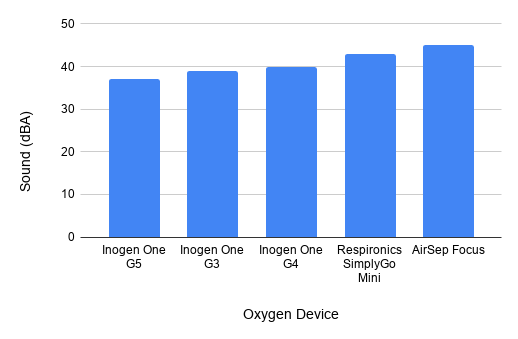
The Ideal Candidate for the AirSep Focus
The AirSep Focus is a record-breaking pulse flow portable oxygen concentrator. It’s both the smallest and the lightest POC ever produced making it perfect for anyone with limited mobility and people who suffer from chronic back or shoulder pain. On the other hand, people with high oxygen needs should avoid this oxygen machine. Since the AirSep Focus only provides 330 ml/min of oxygen, it’s only usable by people with mild stage 1 or stage 2 COPD. Before buying an AirSep Focus, be sure to speak with your doctor or pulmonologist.
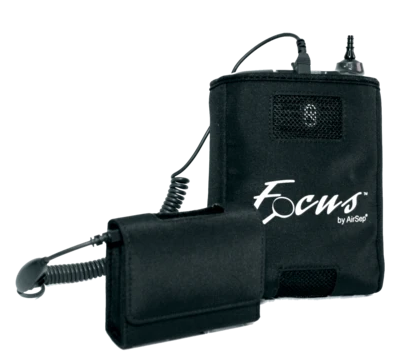
The Ideal Candidate for the Inogen One G5
The Inogen One G5 has also broken many different records. It offers a higher flow setting and a higher oxygen output of any pulse flow oxygen concentrator and it also has the highest external battery life of any oxygen concentrator. It’s also unique in the sense that it can connect with your phone via Bluetooth to offer you additional features that you can’t get anywhere else. The ideal candidate for the Inogen One G5 who has high oxygen needs but doesn’t want to transfer over to a heavier and bulkier continuous flow oxygen machine.

Conclusion
Finding the right portable oxygen concentrator isn’t always as easy as it seems on the surface. You need to first take into account your oxygen needs, then narrow down your pick based on your preferences. The AirSep Focus and Inogen One G5 are both record-breaking portable oxygen concentrators but for two very different reasons: The AirSep Focus is the lightest unit you can currently buy and the Inogen One G5 is one of the most powerful and efficient. No matter which unit you’re interested in, get in touch with our respiratory specialists by filling out the contact form to the right. We’ll help you work out the details of your purchase.
{{cta('43b79c5e-6bd6-4f02-ac27-2d038d20c146','justifycenter')}}
.png)
The Inogen One G5 mobile oxygen concentrator was released in the summer of 2019. It made great strides in terms of battery life, weight, and oxygen output; and to this day, it remains one of the most sought-after oxygen machines on the market. If you’ve just purchased one or you’re considering purchasing one in the near future, you may be wondering, “what now?”
Buying your first Inogen one G5 can be a very liberating experience, but without a plan, you may not be making the most of it. The G5 has a lot to offer in the way of additional features, so it’s important to educate yourself on them as soon as possible. We’ll take a look at some of these features and give you some ideas for how you can use them.
.png)
If you have any questions about using your G5, don’t hesitate to leave them in the comment section, contact us, or reach out to the manufacturer. It’s imperative that your concerns are addressed before you begin using your Inogen One G5 and that you follow the strict oxygen treatment plan that you created with your pulmonologist.
{{cta('fa8abc2a-1e88-4fa3-82fd-1cb5b9ed43b2','justifycenter')}}
1.) Read The Inogen One G5 User Manual
Without a doubt, the most important thing you can do when you first receive your Inogen One G5 is to read and understand the G5 user manual. A user manual or “user guide” is a small booklet or pamphlet that comes with electronic devices such as a portable oxygen concentrator. Inside, you’ll find important information about how your new device works, how to clean and maintain it, and how to troubleshoot any issues you may have with it.
Many people ignore their user manual because they believe it will be a huge undertaking to read through it. However, unlike something like a car manual, portable oxygen manufacturers actually keep their manuals pretty concise and to the point. You won’t have to sit for hours on end to get through it, and if you’re short on time, you can always skip to the important parts and refer back to it later to finish the rest.
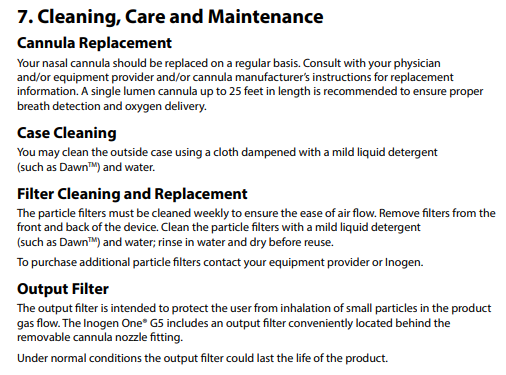
To get started, refer to the table of contents near the front of the booklet. Not every user manual is organized the same way, so the table of contents will help you find the exact information you’re looking for without having to flip through the whole thing. The Inogen One G5 manual contains chapters with separate sub-sections that you can read through. We recommend starting with chapters 2,3, and 4 which tell you how to use your new concentrator.

Another thing you should do right out of the box is to ensure that you have a way of carrying your G5 manual with you. The manual contains a glossary of symbols and troubleshooting information that will be helpful to you when you’re out of the house. G5 accessories like the backpack and custom carrying case are perfect for carrying personal belongings like your user manual. However, if you don’t have these, you may want to make photocopies of the important sections and keep them in your purse or pocket.
2.) Teach a Friend or Loved One About Your Inogen One G5
Once you’ve got a grip on how to use your Inogen One G5, it’s not a bad idea to teach a close friend or loved one how to use it. In case of an emergency like a COPD exacerbation, you’ll feel more secure knowing that someone close to you knows how to operate your portable oxygen concentrator. We recommend starting with people who are closest to you and who spend the most time with you such as a caretaker, your son or daughter, or a friend that you spend a lot of time with.

Start by teaching your loved one about the control panel. This is the part of the oxygen concentrator with the buttons that can be used to control your device. You can find this information under chapter 3 titled “user controls.” Remember that some buttons have more than one function. For example, holding the power button will turn the portable oxygen concentrator off, but tapping the power button will cause the backlight to illuminate.
There are a number of visual and audible signals that can be found in chapter 5 of your user manual as well which indicate things such as battery life, breath detection, column status, oxygen flow setting, and more. Some of these symbols look similar, so take some time to go through them with a friend and ensure you both understand them. If you encounter them while you’re out of the house, you’ll know how to react.
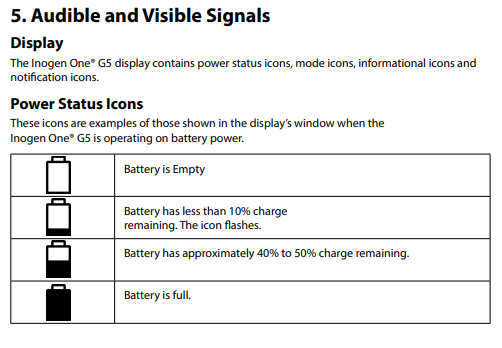
3.) Download The Inogen Connect App on Your Smartphone or Tablet
Inogen Connect is a revolutionary smartphone application that’s compatible with both the Inogen One G4 and the Inogen One G5. Once it’s on your phone, you will be able to connect it to your POC via Bluetooth technology. The app takes information from your oxygen machine and displays it on your phone such as battery life, flow setting, cannula and filter maintenance info, and oxygen purity alert notifications.
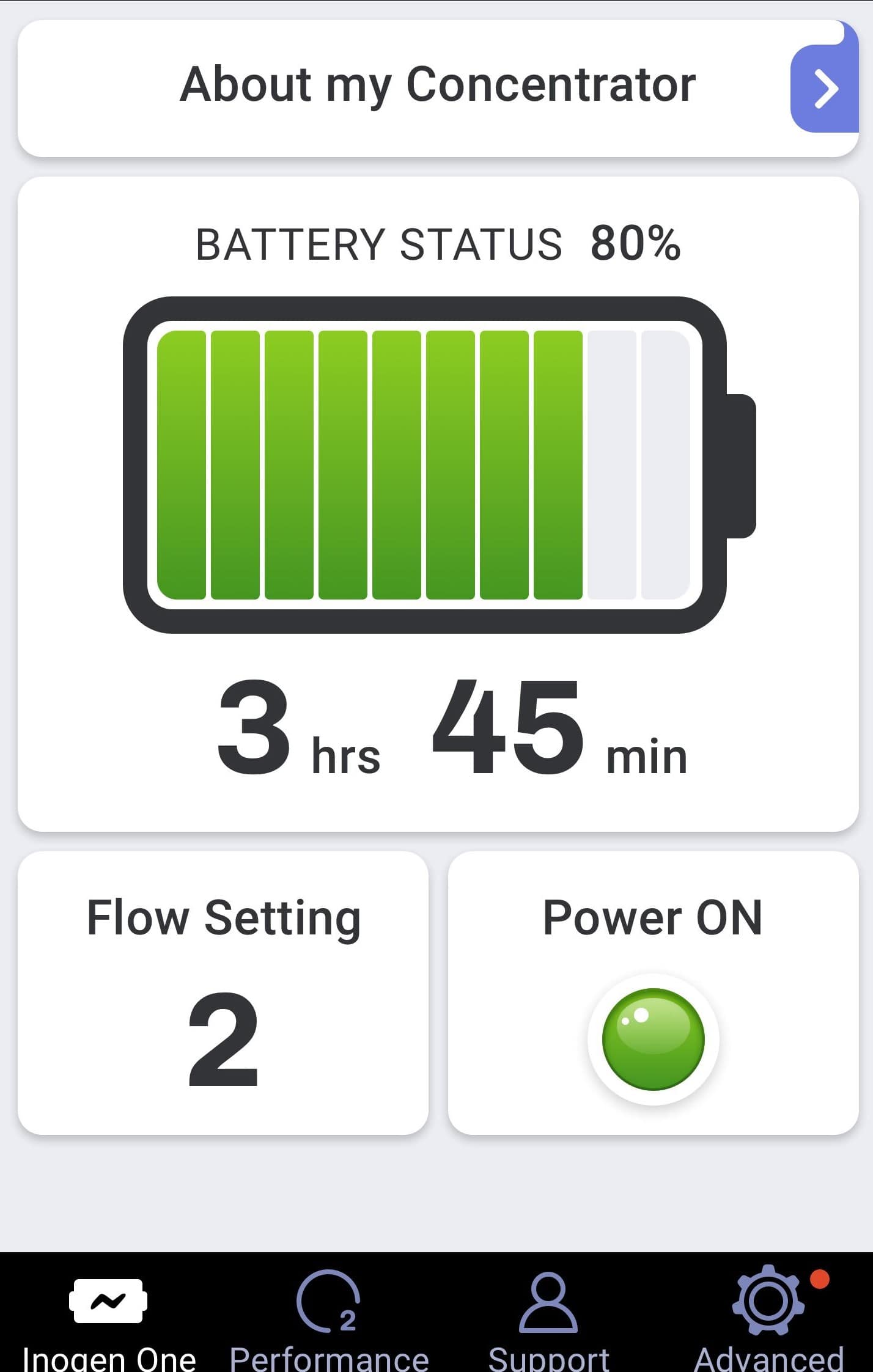
The great thing about this smartphone app is that it offers another way to use your Inogen One G5. If you like to store your concentrator in the G5 backpack or another carrying bag, it can be a pain having to stop and look at the display screen all the time. However, with the Inogen Connect, you’ll simply have to look at your phone and know that you always have up-to-date and accurate information about the status of your oxygen concentrator.
4.) Learn About Inogen One G5 Accessories
As an owner of one of the most portable and powerful pulse flow oxygen concentrators on the market, you’d be remiss not to look into all the accessories you can buy to customize your experience. The oxygen experts at Inogen are always looking for ways to improve user experience and the G5 accessories are a great way to do that.
Batteries
A standard Inogen One G5 purchase comes with a single-cell lithium-ion battery. These batteries are durable, lightweight, reliable, and will provide you with up to 6.5 hours of battery life while on a pulse flow setting of 1. For most oxygen patients, this is ample battery life to keep you going throughout the day until you can make it back home to an outlet, however, you have many other options at your disposal.

First and foremost, you can purchase an additional single-cell battery. This will double your battery life affording you up to 13 hours of freedom on a single charge. Alternatively, you could purchase a double-cell battery which offers twice as much battery life as a single battery. This would afford you about 19 hours of battery life on one charge using a setting of 1.

If you’re someone who’s away from home frequently or you’re planning a long trip, there’s no understating the convenience of having a second battery. With a second battery, you’ll always have a full battery to fall back on in case you stay out longer than expected or you forget to charge one of them. If you do purchase an additional battery, ensure that you use them both regularly. Batteries last longer when they go through a full charge-discharge cycle at least once a month.
{{cta('b59df0c1-c4de-47a8-8e1c-0d33d4b414aa','justifycenter')}}
Carrying Options
Besides battery life, carrying options are possibly the most important of all G5 accessories. The way that you carry your G5 portable oxygen concentrator can have an immense impact on the enjoyment you have in life, so you should ensure that the carrying option you choose matches your lifestyle and preferences.

The G5 custom carrying case offers a minimalist approach to carrying your portable oxygen concentrator. This case is thin and lightweight, but it’s sturdy enough to secure your G5 without it sliding around or falling out. If you’re planning on sticking close to home or you don’t need lots of room for personal space, the G5 custom carrying case is for you.

Alternatively, if you’re going on a long vacation such as a road trip or you’re going out of the country, you may not want to carry a backpack or handbag in addition to your G5 bag. If this is the case, we recommend the G5 backpack. With this accessory, you’ll be able to carry your G5 on your back along with a host of personal belongings. There’s even a special pouch where you can store extra batteries or charging cables.
More
There are several other G5 accessories you should be aware of in order to customize your oxygen experience. If you have more than one battery, you may be interested in the G5 external battery charger. This is a simple device allowing you to charge two batteries at once: one on your G5 itself and one on the external charger. It works with both the single batteries and double batteries and has the same recharge time as the G5 unit.

The DC power supply is another accessory option available to you. Unlike the AC power supply which allows you to charge your oxygen machine in the wall, the DC adapter lets you charge it in the car either while you’re driving or sitting in the passenger seat. The best part of all is that you don’t need to have your concentrator off. If you’re going on a road trip, you’ll be able to charge your oxygen concentrator the whole way there and back!

5.) Get Active Again
If you’ve been using bulky oxygen tanks, liquid oxygen tanks, or immobile home oxygen concentrators your whole life, you’re probably used to being stuck at home. Once you have a lightweight portable oxygen concentrator, it can be difficult to get back into the routine of going out to do things and being active. However, the Inogen One G5 will make it a lot easier with its lightweight design and long battery life.
“Getting active” doesn’t necessarily mean starting pulmonary rehab again. It just means getting back out and doing things that you used to. For example, you may want to start doing all your own grocery shopping again, go over to your neighbor’s house, or cook a meal for your friends and family. These are all things that we take for granted before we start oxygen, but after being on oxygen for years, it’s like a breath of fresh air (no pun intended).

While we can’t wait for you to get out there and experience all the things you’ve been missing without a reliable portable oxygen therapy device, it’s important that you speak with your pulmonologist first. Even though you have the freedom to do pretty much anything you want now, your doctor may advise that you ease into it rather than jumping head first.
6.) Plan a Trip You’ve Always Wanted to Take
There’s no better feeling than pulling out your calendar and starting to plan a trip that you’ve always wanted to take. Maybe you dream of taking a tour around Europe, South America, or maybe just relaxing on the beach in the Caribbean. No matter what your dream vacation is, the Inogen One G5 will be with you the whole way, providing you with a high oxygen output and enough battery life to stay out all day without limits.

One of the greatest things about the Inogen One G5 is that it’s approved by most major airlines and it’s also approved by the Federal Aviation Administration (FAA), an organization that oversees safety regulations for commercial aviation in the United States. Most portable oxygen concentrators are FAA approved, however, pulse flow units like the Inogen G5 are preferred because they’re much smaller and easier to manage than continuous flow portable oxygen concentrators.
If you’ve ever traveled to a foreign country before, especially one where English isn’t a national language, you know it can be a little nerve racking getting around at first. You’ve probably spent hours trying to understand the public transportation system so that you don’t have to hassle with it when you get there. Unfortunately, if you have a bulky oxygen concentrator, you may be in for a whole host of issues with this as well.
Public transportation can be very crowded at times, especially if you’re in the middle of a big city. Oxygen tanks and continuous flow portable oxygen concentrators are not ideal for these situations because they take up a lot of space and they need to be wheeled behind you using a cart rather than being carried on your shoulder. There’s no understating the convenience of having a small and lightweight device when you’re exploring a place you’ve never been before.
7.) Share Your Experience With Other Oxygen Users
Once you’ve taken the time to get acquainted with the Inogen One G5 and you’ve put it to the test, why not share your experience with other oxygen users? Think back to when you first started looking for a portable oxygen concentrator. You were probably confused by terms like “pulse flow” or “continuous flow” and you were probably anxious to pick the right machine while still getting a great deal.

While anyone can sit there and rattle off statistics about the Inogen One G5, what really matters to people is the experience of other oxygen users like you. If the G5 enabled you to regain your mobility and do things that you never thought were possible, don’t keep it a secret, let everyone know! Conversely, if you had a bad experience with it, you should let that be known too. The more oxygen users understand your experience, the more educated they will be about what options they have.
Conclusion
In many ways, the Inogen One G5 took the oxygen therapy industry by storm. Since the early 2000s, oxygen concentrator manufacturers like Inogen, AirSep, and Philips Respironics have been striving to make their portable units smaller, lighter, and more reliable. Many POCs have excelled in these areas, but fallen short in others. But the Inogen One G5 is the first oxygen machine to really excel at pretty much everything.
The G5 has a fantastic battery life, offering the most powerful external battery of any unit on the market. In terms of weight, the G5 weighs in at only 4.7 pounds, which is light enough to carry over your shoulder wherever you go, even with the double-cell battery. And last but certainly not least, the G5 has the highest oxygen output of any pulse flow concentrator with a pulse flow setting of 6.
The Inogen One G5 is a great oxygen machine right out of the box, but if you want to make the most of it, follow the steps in this post. As always, if you have any questions or concerns about using your G5, feel free to get in touch with us. And if you have questions about oxygen therapy and your oxygen needs, consult your pulmonologist.
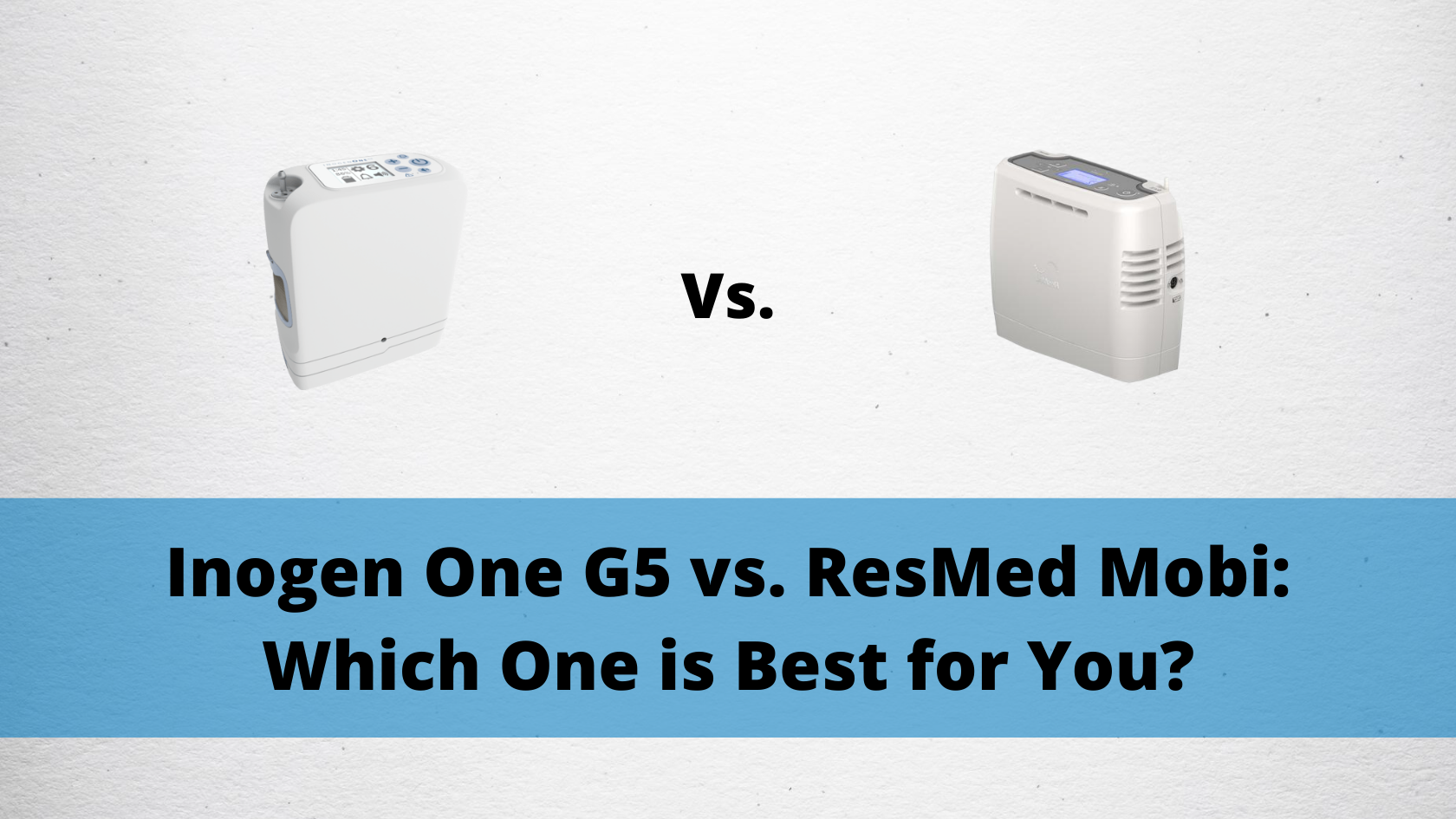
With all the new portable oxygen concentrators releasing each year, it can be really difficult to keep up with everything that’s going on. Doing a web search may help you out a bit, but it will likely raise more questions than it will answer. This is why we’ve taken the time to put together guides like this one to help you learn about the best portable concentrators of the new year.
However, as we’ve mentioned in the past, just because a concentrator is widely considered to be the best on the market doesn’t necessarily mean it’s the best one for you. Every oxygen patient has different wants, needs, and concerns, so it’s important to take all of these things into consideration first. Once you do so, you’ll be able to weigh the pros and cons of each unit before making a decision.
To further this goal, we’re taking a look at two popular pulse flow portable oxygen concentrators this week: the Inogen One G5 and the ResMed Mobi. Each of these concentrators has been praised by patients and retailers alike for their high-quality design and their focus on portability and freedom above all else. Read on to learn more about each unit and feel free to leave a comment if you have any questions.
ResMed Mobi Overview
ResMed is known for its innovations in CPAP technology. Since its inception in 1989, the company has focused on making sleep apnea treatment more effective, comfortable, and accessible. ResMed is also largely responsible for making CPAP devices more widely available for a global audience, allowing sleep apnea patients to get the products they need to sleep restfully.
So far, ResMed has only produced two oxygen concentrators: the ResMed Mobi and the LifeChoice Activox 4L. The older of which, the Activox 4L, marked ResMed’s first foray into oxygen therapy when it acquired the creators of the machine, Inova Labs, back in 2016. In early 2019, ResMed released the Mobi which saw several major improvements over the LifeChoice Activox 4L.

Like the name “Mobi” suggests, this oxygen concentrator is all about mobility. This device offers a lightweight design, ample battery life, and plenty of carrying options to suit your wants and needs. The ResMed Mobi has an internal battery, so unlike other portable oxygen concentrators, you won’t have to take time to replace batteries unless you want to use the Mobi’s external battery system.
Inogen One G5 Overview
Inogen was created in the early 2000s with the dream of revolutionizing the way COPD patients see oxygen therapy. At the time, oxygen patients dreaded using oxygen tanks because it meant being bound to their homes and expending a significant amount of their savings refilling their tanks once or twice a day. What’s more, these tanks could be dangerous and many people felt insecure even being around them.
.png)
The Inogen G5 is the latest pulse flow POC in Inogen’s “G” series of units. It boasts the highest oxygen output of any pulse flow portable oxygen concentrator on the market, coupled with a lightweight design and an incredible battery life. We labeled the Inogen One G5 the best portable oxygen concentrator of 2020 because we believe it’s the best machine for the greatest number of people.
{{cta('fa8abc2a-1e88-4fa3-82fd-1cb5b9ed43b2','justifycenter')}}
Pulse Flow Settings
As aforementioned, the Inogen G5 and ResMed Mobi are both pulse flow portable oxygen concentrators. What this means is that they both use pulse flow technology. This technology was developed as a more efficient alternative to continuous flow which is the oxygen delivery method used on heavier and more cumbersome oxygen concentrators.
As opposed to continuous flow which puts out a constant stream of oxygen, pulse flow delivers a bolus of oxygen only when the patient inhales. In concentrators like the G5 and Mobi, this plays an important role in keeping the units small, lightweight, and allowing the battery to last as long as they do.

Oftentimes, this is the best place to start when choosing an oxygen concentrator, because if your machine doesn’t meet your oxygen demands, it’s not worth pursuing in the first place. You’ll be happy to know that both the Inogen One G5 and ResMed Mobi offer plenty of options. The G5 can go up to a setting of 6 and the Mobi can go up to a setting of 4.
The vast majority of oxygen patients only need a setting of 2, so both of these units tend to be a great choice. However, if your doctor recommends you use a higher flow setting or you want room to move up, the Inogen One G5 could end up being a safer choice for you.
Battery Duration
In the world of portable oxygen concentrators, battery life equals freedom. Fortunately, the Inogen One G5 and ResMed Mobi are both contenders for the best battery life of any portable oxygen concentrator on the market. However, their batteries work a little bit differently, so it’s important to understand these differences before you make a purchase.

The G5 runs solely on external batteries that can be attached or removed from the device. The G5 single battery (8-cell battery) which comes with the device offers up to 6.5 hours of life on a pulse flow setting of 1. The G5 double battery (16-cell battery) which is sold separately, offers up to 13 hours of battery life on a setting of 1.
Instead of coming with an external battery like the G5, the ResMed Mobi has a battery built into it. This internal battery offers 8.6 hours of battery life on a pulse flow setting of 1. However, there is an external battery you can purchase separately which extends this to 13.1 hours of battery life on one charge.
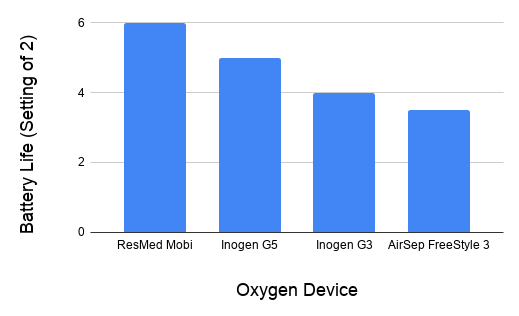
Weight
Weight is the third most important factor to consider when choosing a portable oxygen concentrator. After all, it wouldn’t be portable if it wasn’t light enough to carry around with you wherever you go. There are several important things to note when comparing the weight of the G5 and the weight of the ResMed Mobi.
The G5 weighs in at 4.7 pounds and the Mobi weighs in at 4.8 pounds. For the most part, the weight difference is negligible, however, you have to remember that the Mobi has more built-in battery life than the G5 offers with a single battery. If you want more than 6.5 hours of battery life with your G5, you’ll need to purchase an extra single or double battery which will add some extra weight.
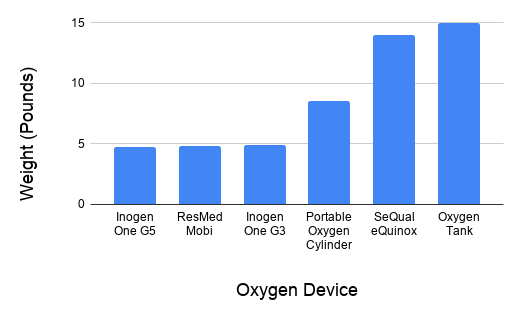
All things considered, the Inogen One G5 and ResMed Mobi excel when it comes to weight. If you suffer from back pain or other conditions that prevent you from carrying heavy objects, you’ll find that these two units are some of the best on the market. Most patients can easily carry these machines over their shoulder without having to use a rolling cart.
Sound Level
Sound level isn’t usually a problem with portable oxygen concentrators. If you’ve never heard one before, most people compare it to a quiet hum, not much louder than a whisper. Some patients notice the sound at first, but after a day or two of using the oxygen device, they get used to it.
It is worth noting the noise level of both units, however, because the Mobi is on the louder side compared to other pulse flow portable oxygen concentrators. The Inogen One G5 is just 37 decibels (dBA) on a setting of 2 and the Mobi is 44 dBA on a setting of 2. In most situations, you probably won’t notice this difference, but if you’re in a quiet place like a library, you may find that the Mobi is too loud.
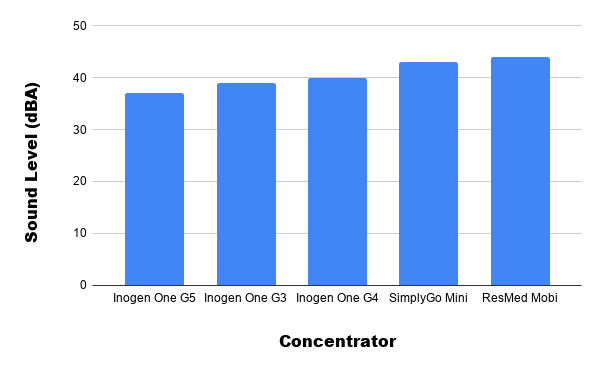
Usability
Ease-of-use and usability are important factors to consider when buying a portable oxygen concentrator. If you struggle to use your machine correctly while you’re out of the house, you could waste a lot of time that you could be spending enjoying your life. You should strive to find a POC that suits your lifestyle and doesn’t produce any unnecessary hassle for you in your daily life.

Both the Mobi and the G5 have user-friendly interfaces that enable you to easily modify your oxygen flow or check your battery life on-the-go. The control panel is built into the top of the unit and there aren’t a whole lot of buttons that you’ll need to deal with. Most oxygen patients are happy to find that they can learn all the ins and outs of operating their unit within the first day or two of owning it.
Accessories
You’d be remiss to purchase a Mobi or G5 without looking into all the great accessories they have to offer. One of the things you’ll be happy to find is that both units offer plenty of carrying options in order to customize your experience and allow you to live life on your own terms.

The Mobi has a sleek, gray carrying case that can be slung over your arm, worn on your back, or even attached to a suitcase or rolling cart using four different straps that you can purchase separately. The G5, on the other hand, has two different carrying options: the G5 Custom Carrying Case and the G5 backpack. The custom carrying case is for those looking to travel light and the backpack is great if you’re going on a long vacation and need to carry a lot of personal belongings.
The Ideal Candidate for the ResMed Mobi
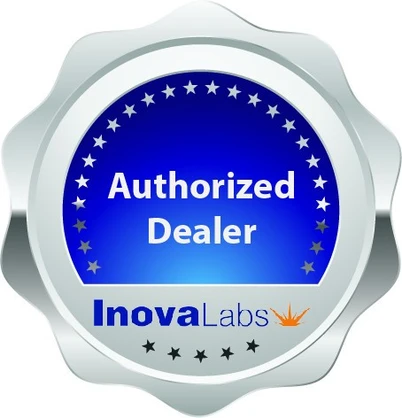
The Mobi is ResMed’s first foray into medical oxygen devices after acquiring Inova Labs in 2016. While they are new to the oxygen industry, they have three decades of experience with producing sleep therapy equipment and they are largely responsible for the success of CPAP and BiPAP therapy today. Coupled with their prominence and reputability, ResMed has what it takes to put out great portable oxygen concentrators.
ResMed certainly didn’t disappoint with the ResMed Mobi. This portable oxygen concentrator is lightweight, has a small form factor, and has an outstanding internal battery that will keep you going all day. The ideal candidate for the Mobi is someone who wants more freedom in their day-to-day life. This means not having to worry about refilling an oxygen tank, having a long-lasting durable battery, and a reliable machine that can run 24/7 while you’re asleep or while you’re awake.
The Ideal Candidate for the Inogen One G5

It’s hard to compete with Inogen when it comes to their track record of success. While they haven’t been around as long as other oxygen concentrator companies, the impact they’ve had is undeniable. In fact, Inogen is such a sought-after brand that patients and retailers alike eagerly await the release of their concentrators and accessories.
Having been released this past summer, the Inogen One G5 is a top-tier portable oxygen concentrator. In terms of weight and battery life, the G5 is neck-in-neck with the ResMed Mobi. Most importantly though, the G5 offers two more flow settings than the Mobi, so if you have higher oxygen demands, the G5 will always be a better choice.
Conclusion
At the end of the day, you can’t really go wrong with the Inogen G5 or ResMed Mobi. Both units are backed by reputable and experienced brands and they’re some of the most advanced oxygen therapy devices the industry has to offer. Once you ensure that your oxygen needs are accounted for, it ultimately comes down to preference. If you’ve used ResMed sleep apnea products before, go with the Mobi. However, if you’ve used other Inogen products like the G3 or G4, the G5 may be your first choice.


 So we can find the best portable oxygen concentrator for your needs!
So we can find the best portable oxygen concentrator for your needs!













